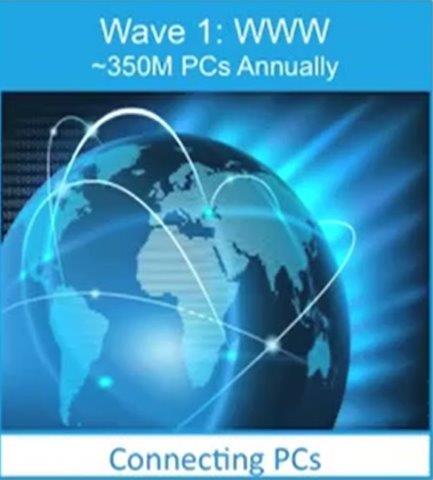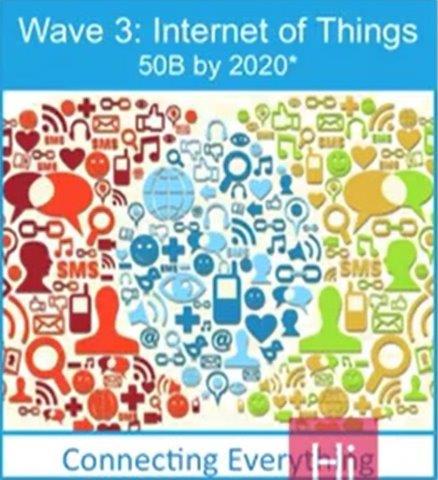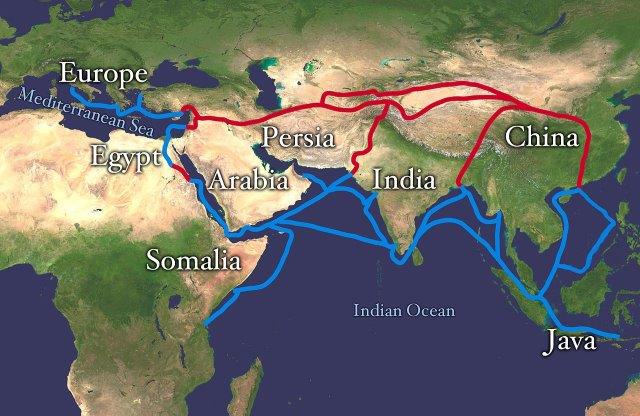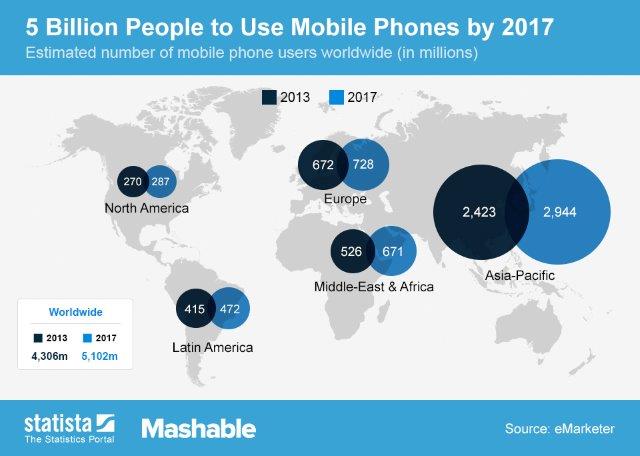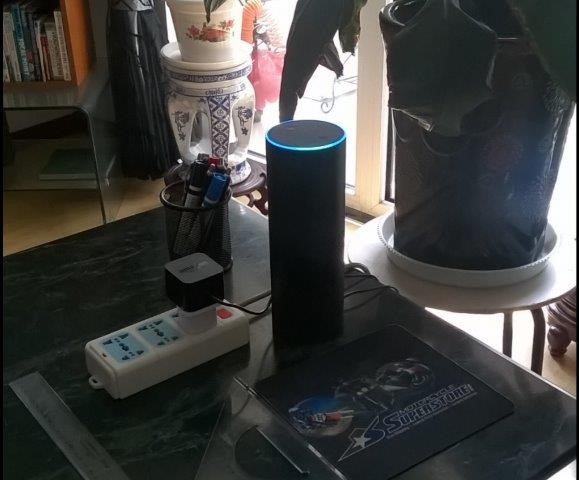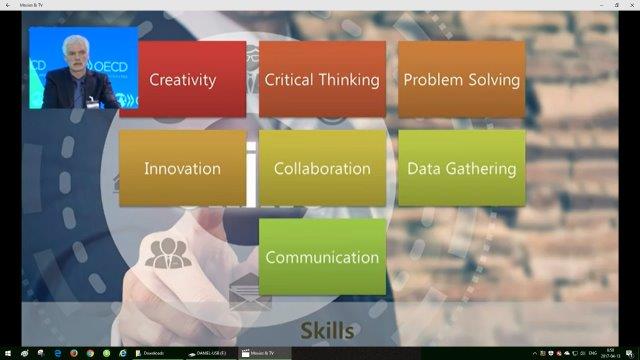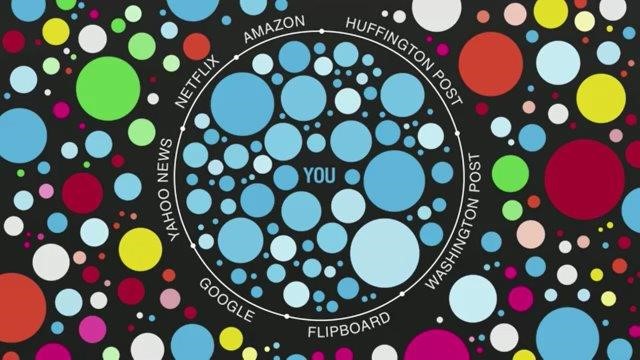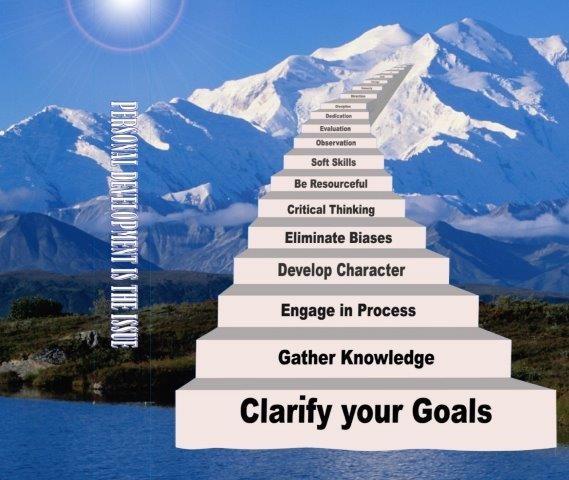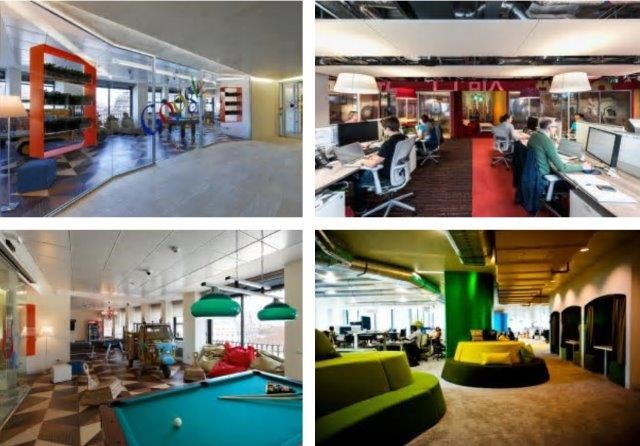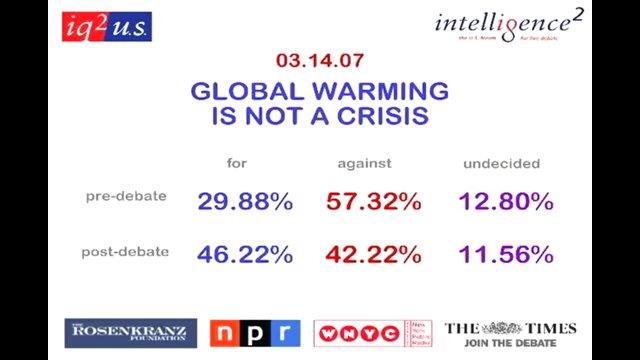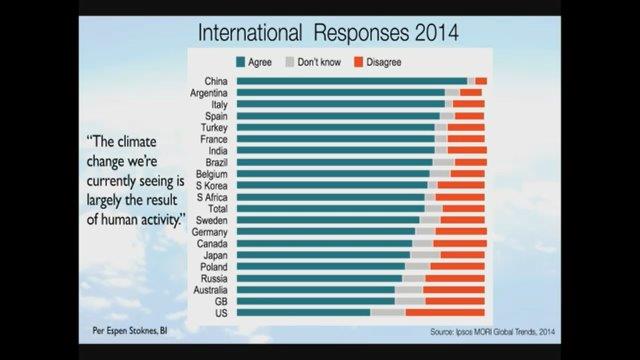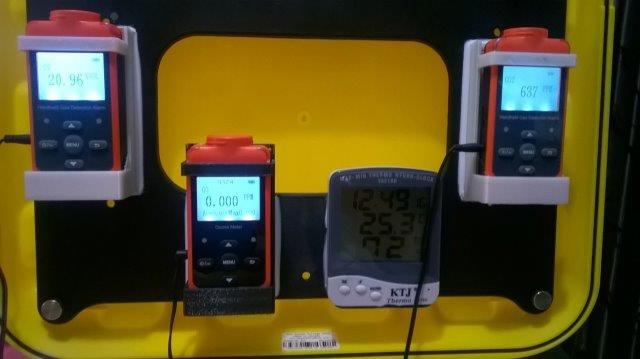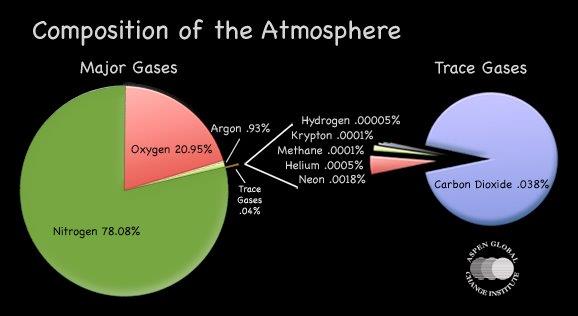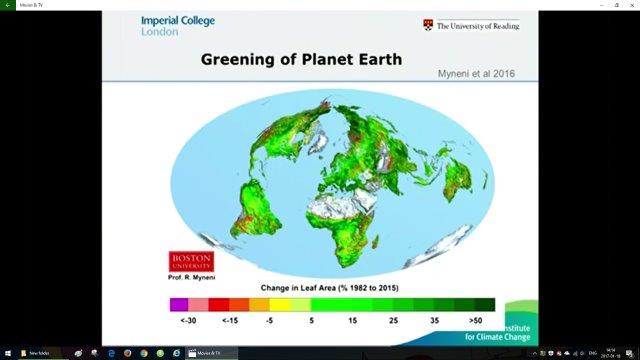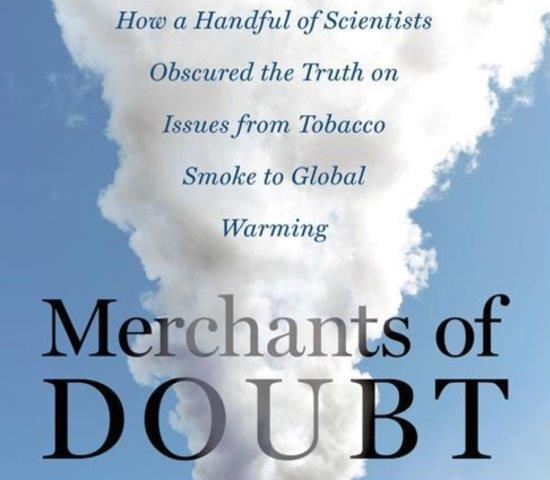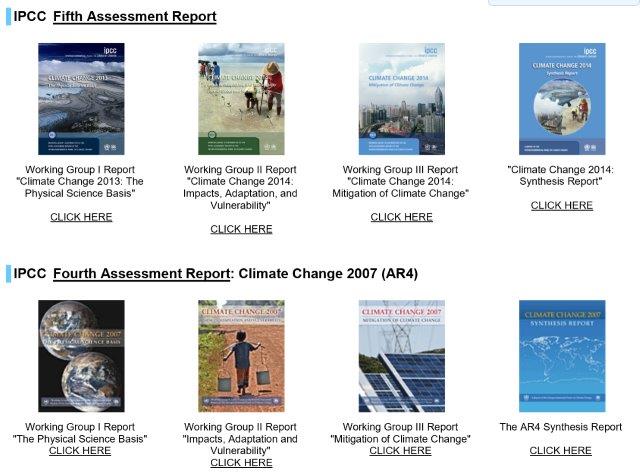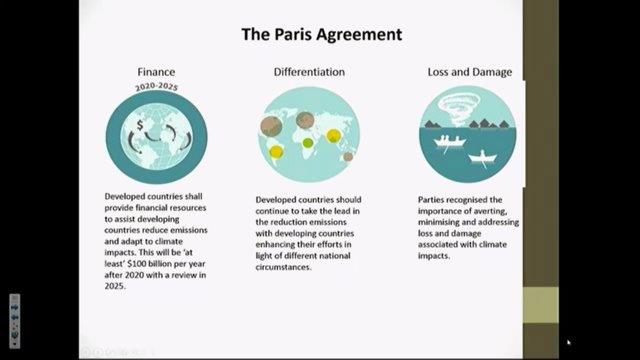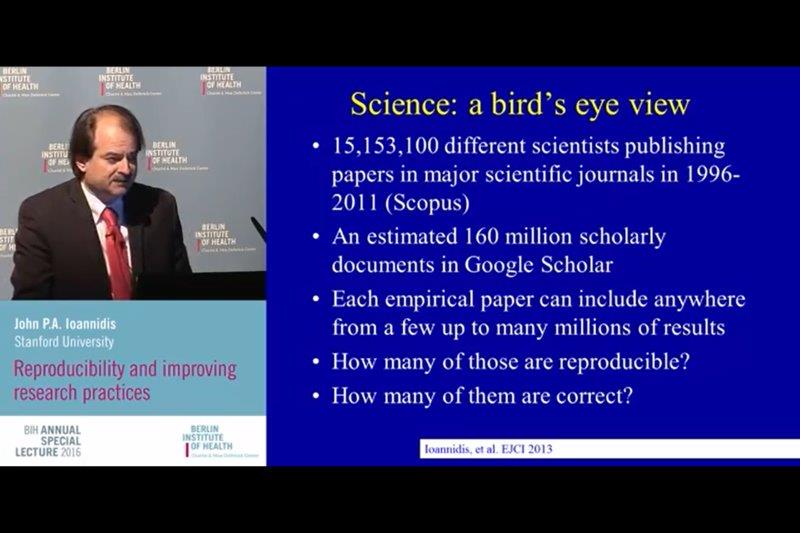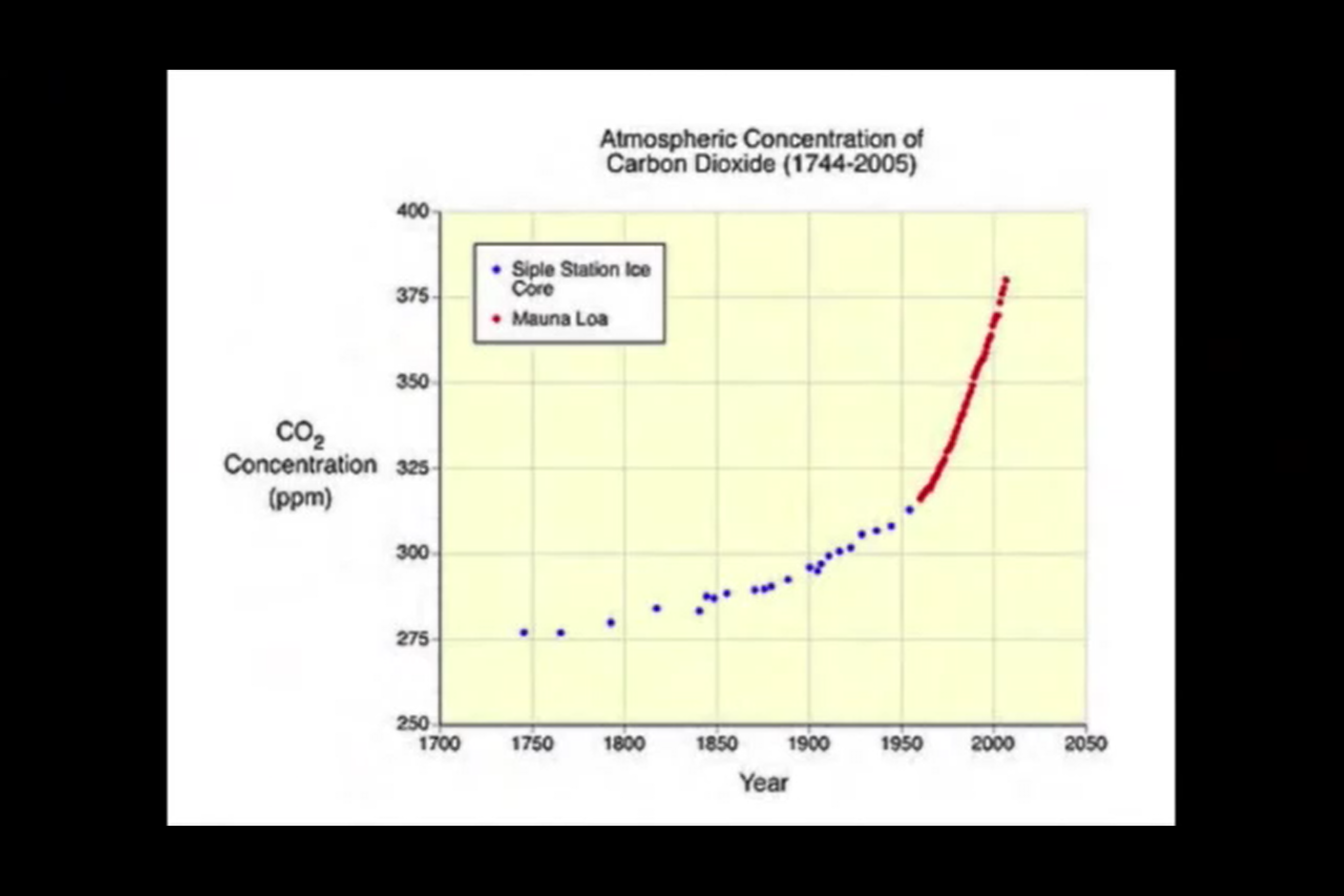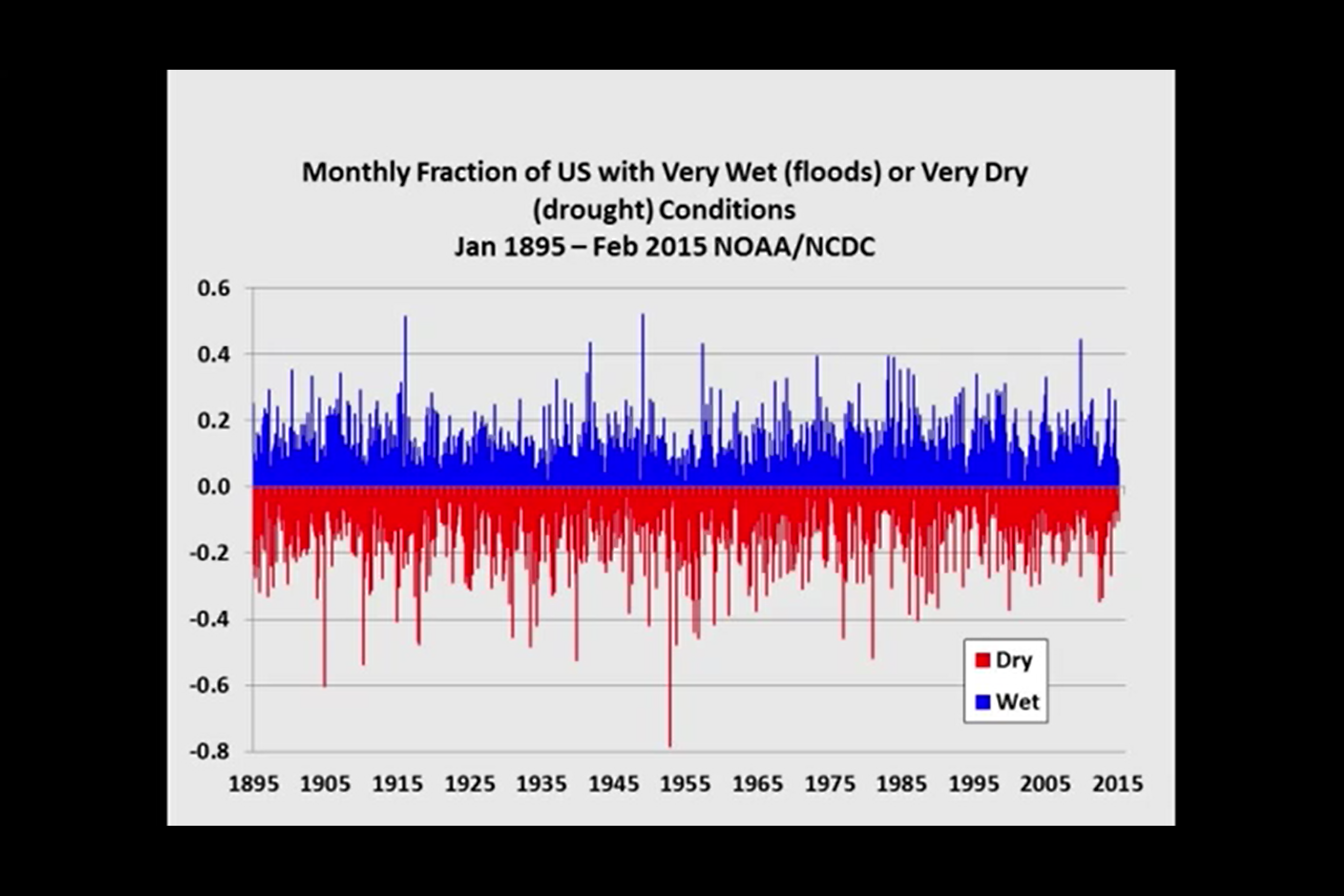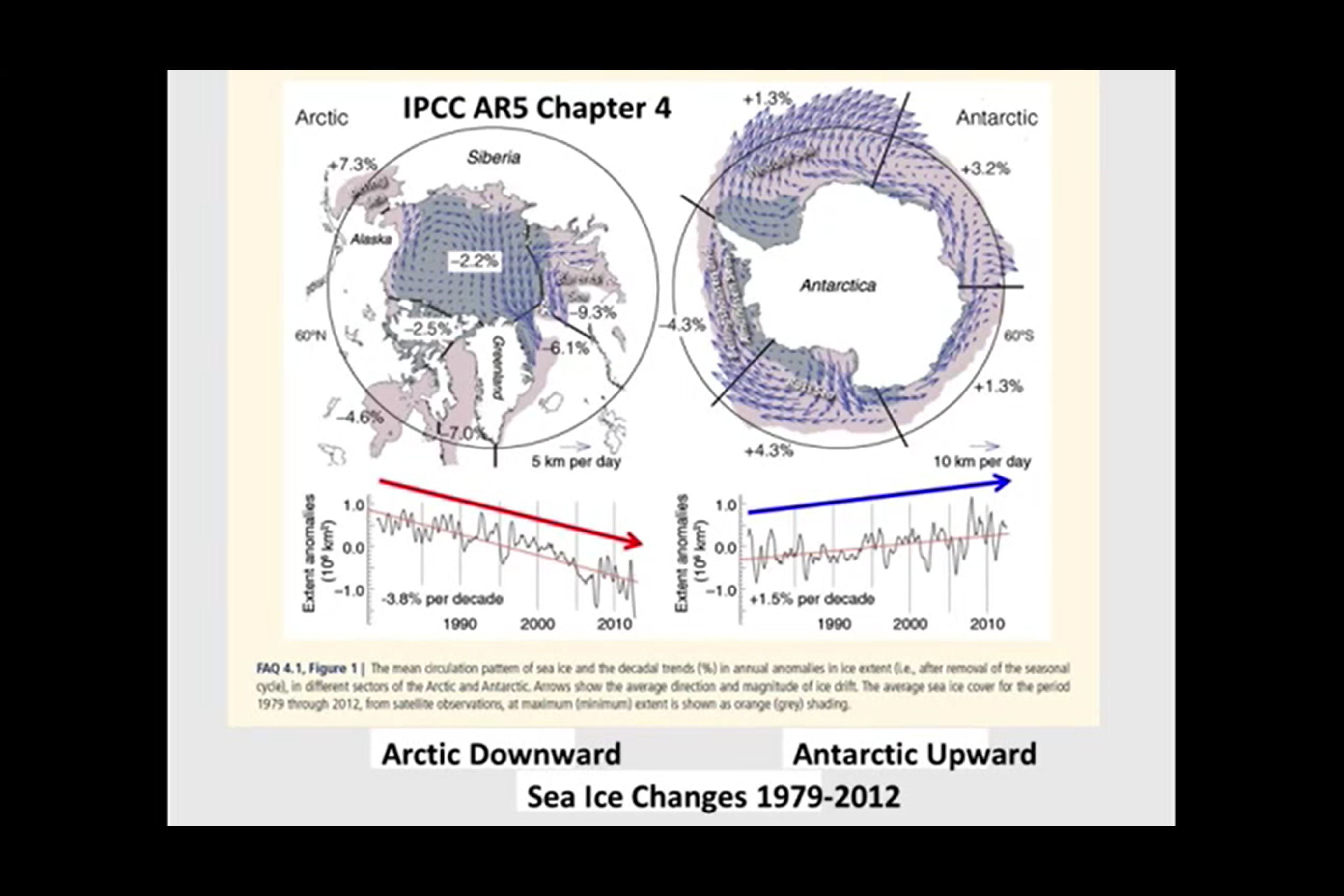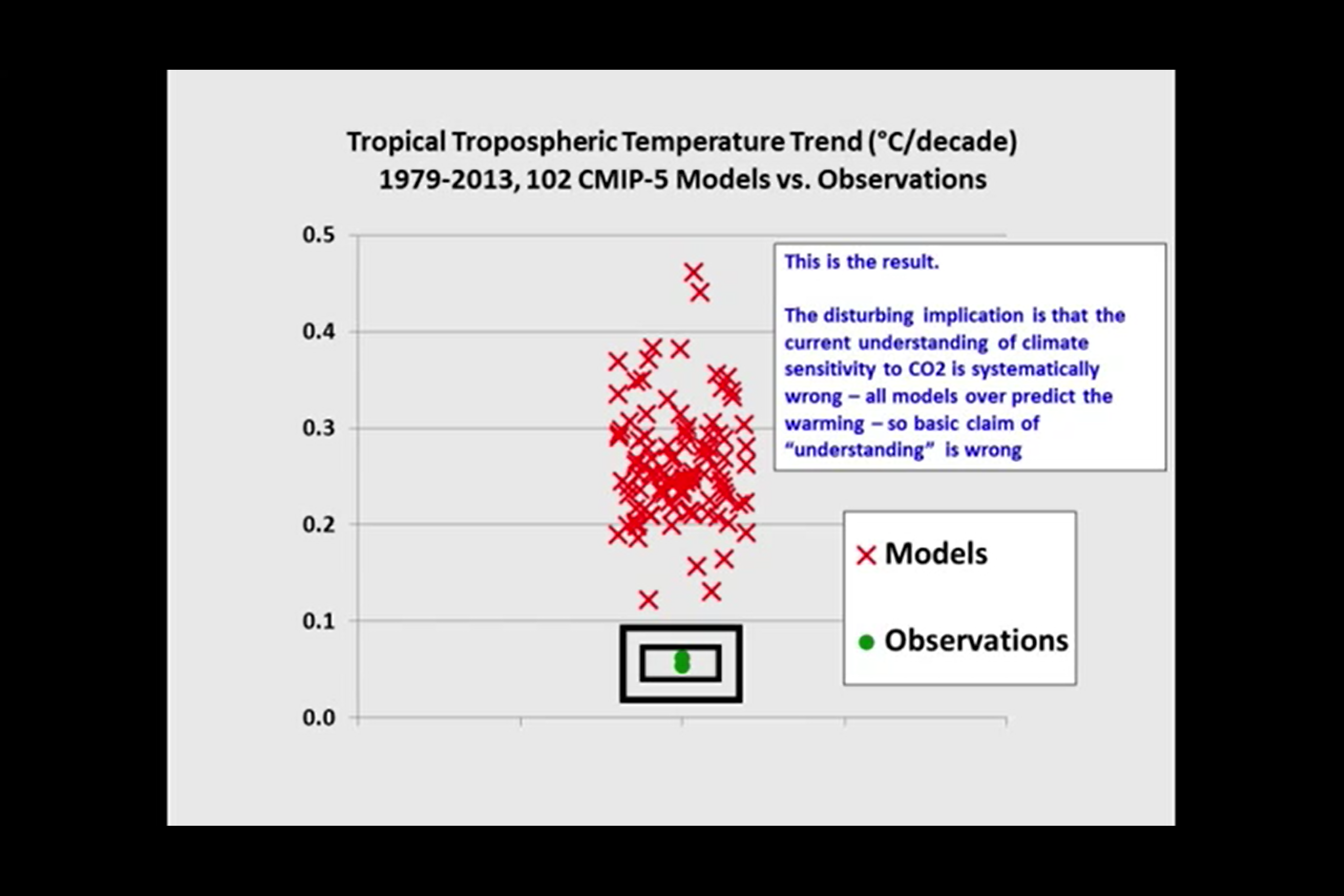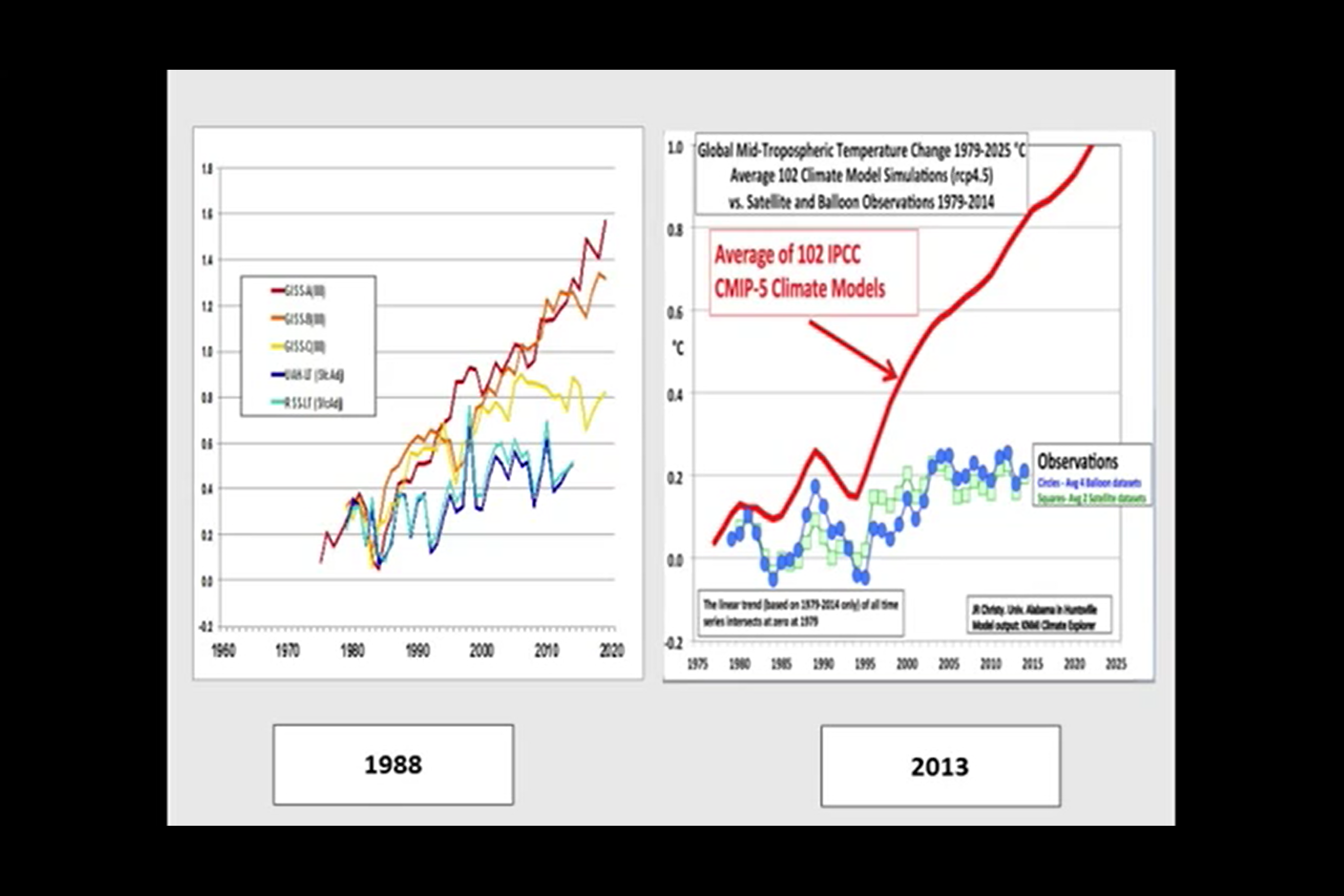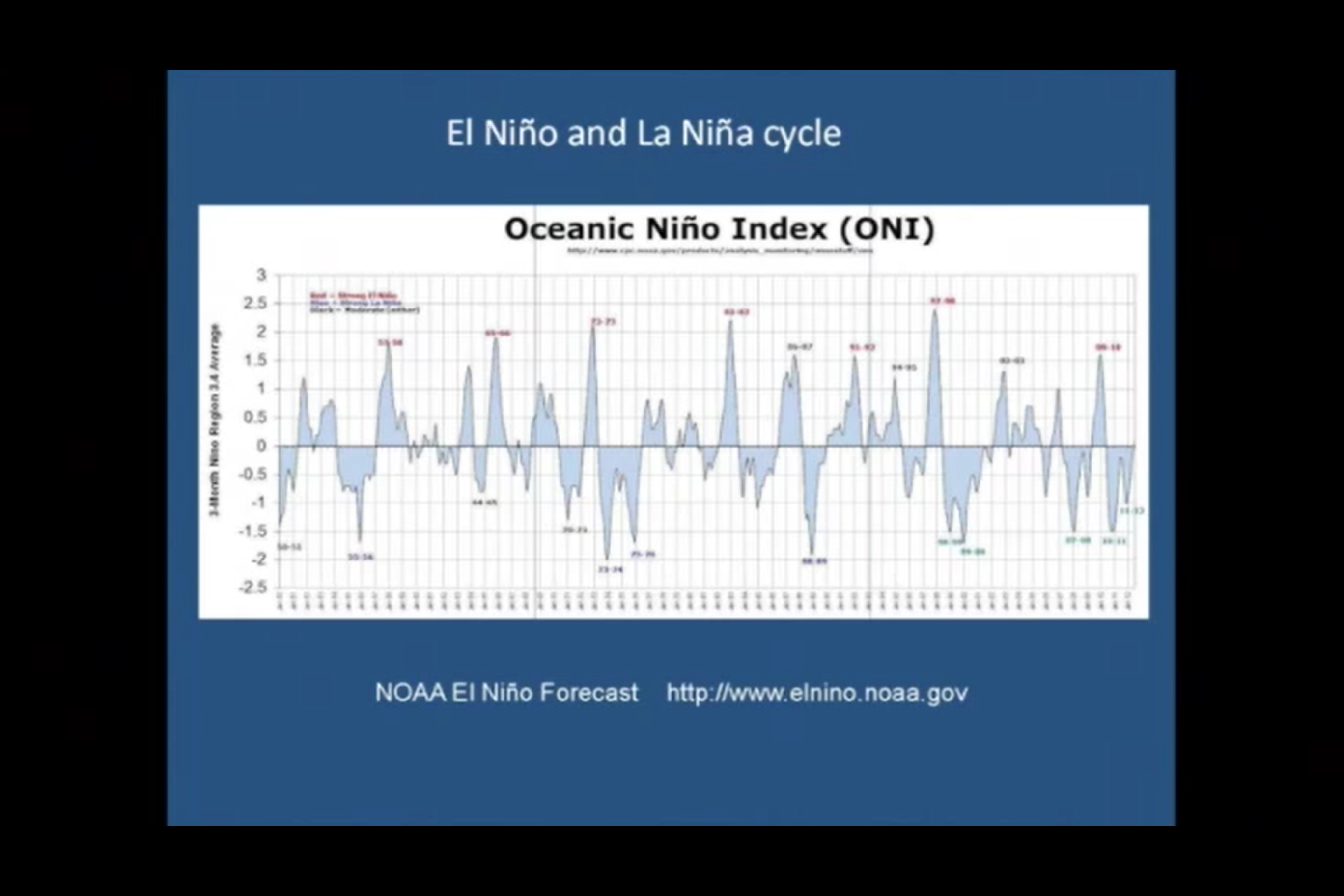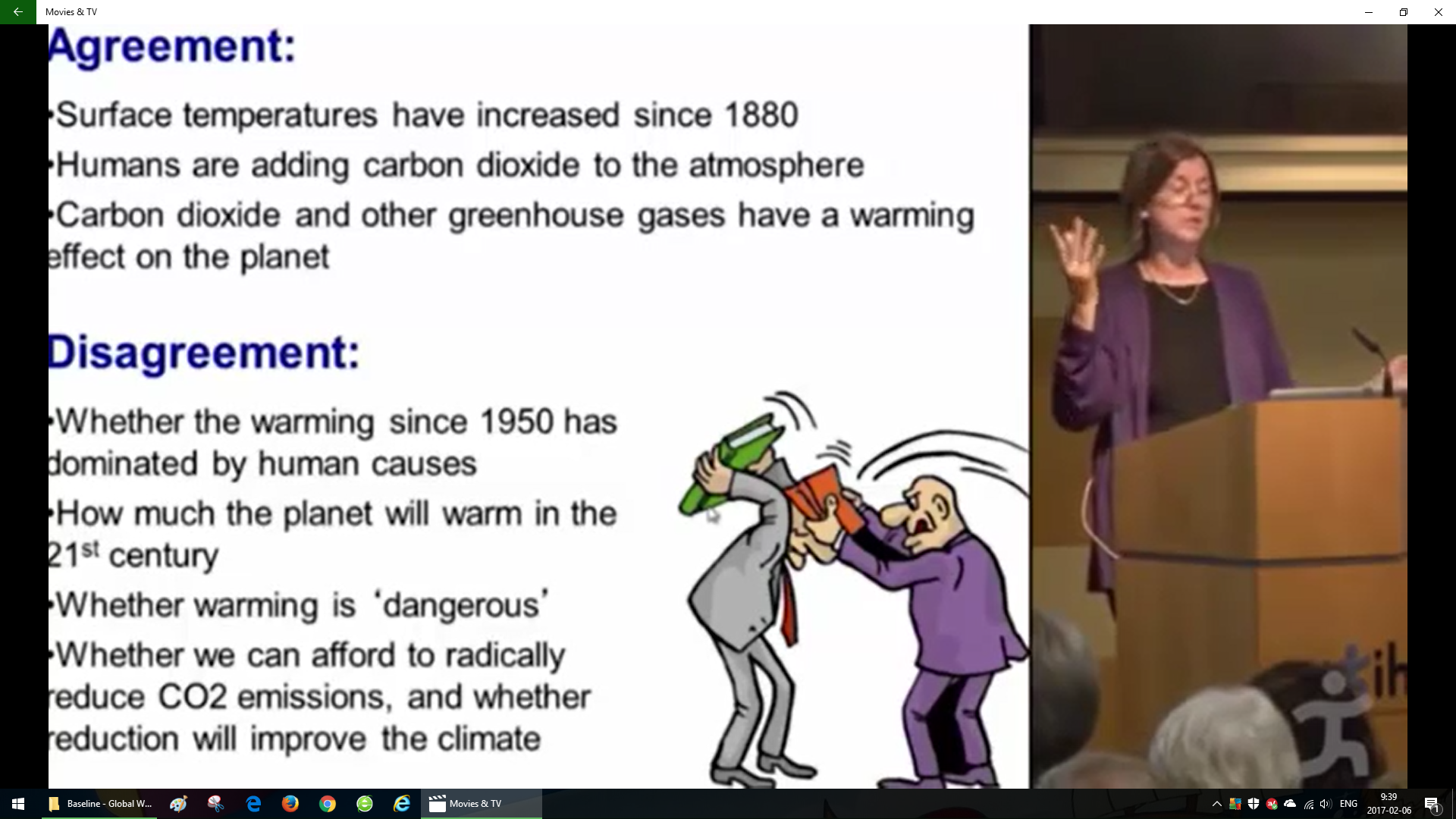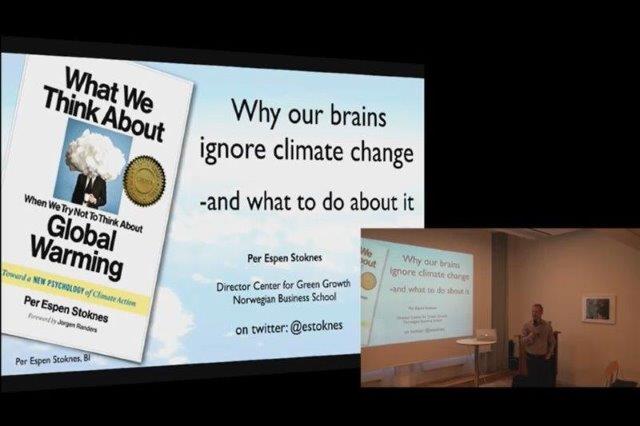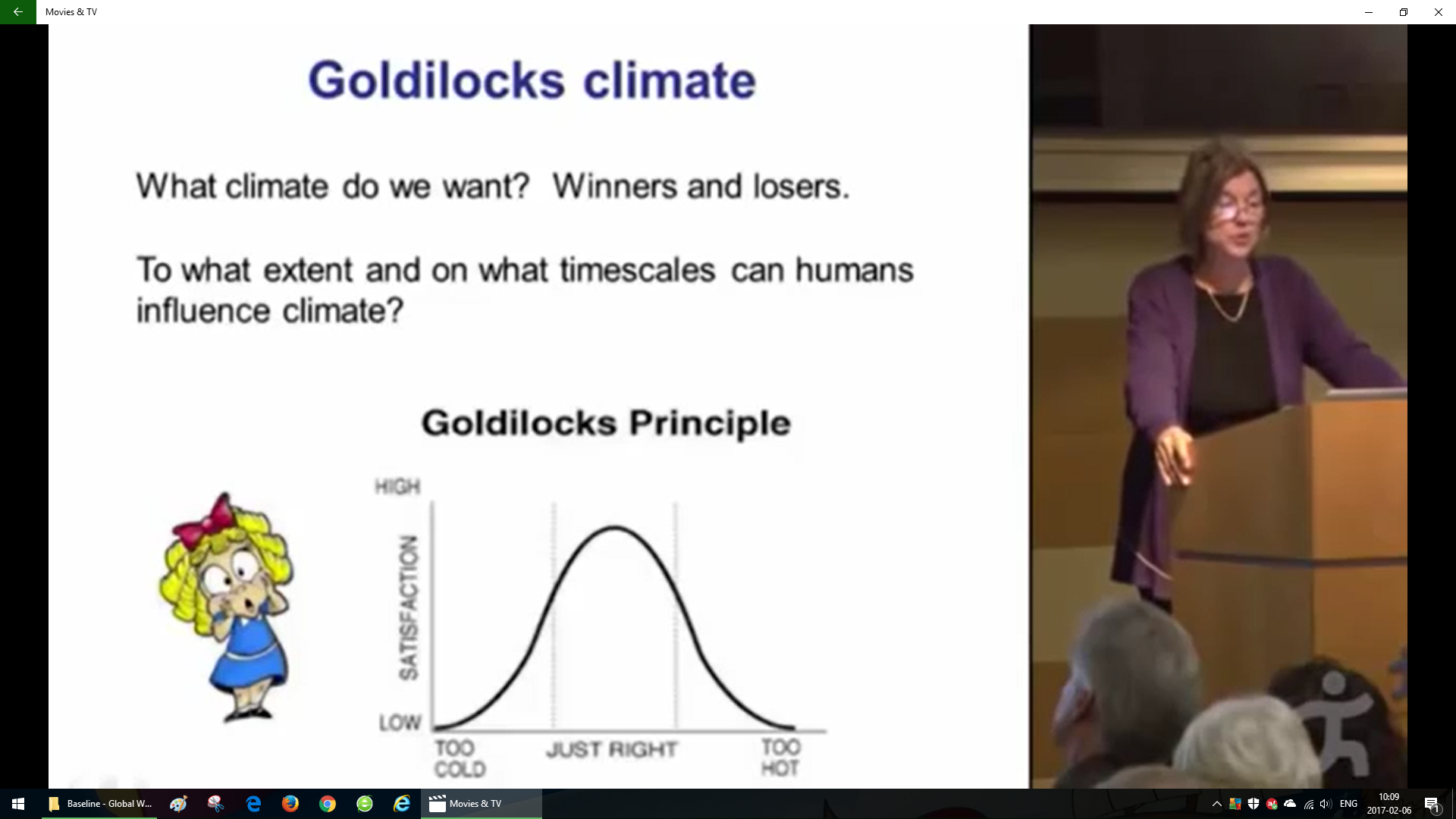“Each of us believes himself to live directly within the world that surrounds him, to sense its objects and events precisely, and to live in real and current time. I assert these are perceptual illusions. Sensation is an abstraction, not a replication of the real world.” Vernon Mountcastle
Quote from YouTube Video: Kavli Prize Laureate Lecture – The Restless Brain
The Life Goals Planner (Chinese)
The Professional Speaking Guide
Table of Contents
WHAT’S THIS GUIDE IS ALL ABOUT:
INTRODUCTION TO THE SPEAKING INDUSTRY
COMMUNICATING IN THE 21ST CENTURY:
THE MYTHS OF BEING A PROFESSIONAL SPEAKER:
WHY BECOME A PROFESSIONAL OR PUBLIC SPEAKER:
INTERVIEWS & REAL LIFE STORIES:
Finding a Dream by Joan Posivy:
CAREER OPTIONS & OPPORTUNITIES:
THE SKILLS OF A PROFESSIONAL SPEAKER:
Voice Development By Diana King.
What Makes a Good Speaking Voice.
Breathing and Posture Exercises
Turning sound into meaningful words and phrases:
Tips for Dictation and Accent Reduction
DEVELOPING PROFESSIONAL SPEAKING SKILLS:
BEING A LEADER BY DOROTHEA HENDRIKS:
Writing a Speech using the “Rule of Three”.
DESIGNING YOUR SPEAKING MATERIALS
MARKETING YOURSELF AS A SPEAKER:
MYTHS & MISTAKES IN MARKETING BY DANIEL LOK:
THE INTERVIEWER & INTERVIEWEE:
Preparation for a successful TV or Radio Interview by Elisabeth Baldazzi:
WHY WRITE YOUR OWN BOOK BY DAN LOK:
LESSONS LEARNED BY DEBRA CALDERON:
WHAT MEETING PLANNERS LOOK FOR IN A SPEAKER:
Advice from the National Speakers Bureau
APPENDIX A: SPEAKERS RESOURCES
PROFESSIONAL SPEAKING ASSOCIATIONS:
International Federation for Professional Speakers
Canadian Association of Professional Speakers
Professional Speakers Association
The National Speakers Association of Australia
National Speakers Association of New Zealand
American Seminar Leaders Association
Walters International Speaking Bureau
TRAINING ORGANIZATIONS & SPEAKER INFORMATION:
American Seminar Leaders Association
LISTING & REGISTERING YOUR BOOK IN CANADA:
Copyright Act: http://laws.justice.gc.ca/en/C-42/index.html
Canadian Intellectual Property Office (CIPO)
The Canadian Intellectual Property Office
BOOK INDUSTRY ORGANIZATIONS/CLUBS:
BOOK WHOLESALERS/DISTRIBUTORS CDN & US:
The Canadian Authors Association
Canadian Booksellers Association
The Association of Book Publishers of British Columbia
The Canadian Publishers’ Council
The Association for the Export of Canadian Books
Independent Publishers Association of Canada
The American Library Association
Publishers Marketing Association
The Life Goals Planner
English Pingyin Mandarin Guide
Introduction to Mandarin Chinese
Without taking a regular class, an adult foreigner trying to learn Chinese will have many challenges. This handbook provides a simple understanding of the fundamentals to avoid developing bad habits while equiping you with the basic words and phrases to handle normal life in China. I am a forty year-old Canadian who moved to China in 2003 looking for new opportunities and to learn a second language. After taking a couple of crash courses (Mandarin Level 1-2) from a leading language school in Vancouver, Canada, I headed to China. The training helped but I quickly found I needed help with everything, and I mean everything. To learn this language you either go to school and learn like a grade school child from the beginning or you start your self-learning process and figure it out as you go along.
Not only is this tone-based language rated as one of the hardest languages to learn in the world, but add on top of that the cultural differences and you’re in for a real journey. China has advanced considerably since 2005 and more and more Chinese are speaking English, so the need to learn the language in depth is not required for mature adults unless you’re looking at having official recognized Chinese certifications. They are the HSK tests. (Hànyǔ yǔyán shuǐ píng kǎoshì, 汉语语言水平考试) To be recognized for your level of Chinese, I suggest you go to the best language school and study like a student or take one of these many pocket books and learn the most common, active language. There are many excellent pocket books available for travelers, perfect for those picking up the language as they live and work in China. Lonely Planet has several excellent pocket books and found one invaluable during my first years. Any bookstore anywhere in the world will have various options for you.
This book was comprised of my first two-thousand words and the simplest way I could have learned it with my busy life. To simplify this complex language I broke it down to three fundamental things you need to learn:
- The basic structure of the language (grammar)
- Vocabulary (lexicon)
- How to speak those words (pronunciation)
Structure:
The basic structure of the sentence is the same as English (subject – object – verb) and described in simplified form in the relevant sections.
Vocabulary:
This is just words. The 2,000 words here are most general for the average person, like myself, who got married and started a business in China. Of course the words you learn first will be directly associated with what you’re doing in China.
Pronunciation:
The Pinyin (pinyin, 拼音) system was developed in the 60s to help the Chinese pronounce Chinese characters, as the Chinese character contains no visual indication of its phonetic sound. Pinyin simply uses Roman characters with a tone mark.
Vasic Chinese Grammar
Chinese grammar is very similar to English in that the basic sentence is comprised of a subject, verb, and object. The book has an explanation of Chinese grammar is as simple as it gets, leading you to picking up the basics quickly and easily.
Grammatical Terms
The book has a full list of other grammatical terms that you may find useful in your language development.
Measure Words
English and Chinese both use ‘measure’ words to refer to quantity and to quantify uncountable nouns (e.g., a bag a sugar). Unlike English, however, Chinese uses measure words for both countable and uncountable nouns. The most common measure words used are recorded in book.
Tones: shēngdiào
There are four basic tones, plus a neutral tone, in Mandarin. Although they are important, you should not be too busy about getting them right and memorizing each tone for each word. Chinese children before attending grade school are similar to foreigners in that they do not pronounce the tones when speaking. This is something that develops later as they build vocabulary and simple sentences. My advice is to understand these tones and continually ask which are appropriate for specific words while focusing more on making sentences.
Chinese syllables are composed of consonants and vowels. Vowels consist of:
monophthongs, such as “a, o, e,”; and diphthongs, such as: “ai, ei, and ao”; and vowels plus nasal consonants such as: “an, ang”.
Vowels: yùnmǔ
Concise Dictionary translates vowels as: a) yuányīn 元音 b) yuányīn zìmǔ 元音字母
Initial Consonants: shēngmǔ
Concise Dictionary defines consonants as: a) fǔyīn 辅音 b) fǔyīn zìmǔ 辅音字母
Mandarin Consonants:
For tones, vowels, and consonants it is best to have a recording of these sounds and or have your Chinese friends sound them out for you.
Days, Months &Time
Tip on using time: In Mandarin time always follows the order of the largest time first through to the smallest. When speaking or writing it flows from year to month to day to hour.
Example writing the date: Year – Month – Day
Example when speaking: This year on February 4th at 3pm I went to school. In Chinese you would say “I 2015, Feb 4th, 3pm went to school.” (Wo 2015 nian, er yue, si hao, xiawu san dian shangke le.)
Sentence Example:
I am Canadian. (American, French, German, Chinese) This is my first time to come to China. (America, Canada, France, Germany) I came to Qingdao (Vancouver, Toronto, New York) to learn Chinese. (English, French, German) I like to learn Chinese (Mandarin). I like Qingdao very much because Qingdao is beautiful. I have a good friend who is Japanese. He also came to Qingdao to learn Chinese. Together we learn Chinese. Mandarin is very difficult we should study hard.
Wǒ shì Jiānádà rén. (Miēguó rén, Fàguó rén, Déguó rén, Zhōngguó rén) Wǒ dìyīcì lái Zhōngguó. (Mēiguó, Jiānádà, Fàguó, Déguó) Wǒ lái Qīngdǎo (Wēnggéhuá, Duōlúnduō, Niǔyuē) xué Zhōngguó huà. (Yīngwén, Fàyǔ, Déyǔ) Wǒ xǐhuān xué Zhōngguó huà (Pǔtōnghuà). Wǒ fēicháng xǐhuān Qīngdǎo yīnwèi Qīngdǎo hěn piàoliàng. Wǒ yǒu yí
ge hǎo péngyǒu, tā shì rìběn rén. Tā yě lái Qīngdǎo xuéxí Zhōngguó huà. Wǒmén yìqǐ xuě Zhōngguó huà. Pǔtōnghuà hěn nán, wǒmén yīnggāi nǔlì xuéxí.
我是加拿大人.(美国人,法国人,德国人,中国人) 我第一次来中国.(美国,加拿大,法国,德国) 我来青岛(温哥华,多伦多,纽约) 学中国话.(英文,法语,德语) 我喜欢学中国话(普通话).我非常喜欢青岛因为青岛很漂亮.我有一个朋友,他是日本人.他也来青岛学习中国话.我们一起学中国话.普通话很难,我们应该努力学习.
[Download] the full book in PDF.
The Home Renovation Planner
Table of Contents
The principles of the renovation project and management:
Section 2 Planning the Project
Apartment Remodel Sample Plan:
How to find the products you want to use:
Section 4 Choosing a Contractor
What work to do and what not to do:
How to bring the best out of the trades people:
Forms for hiring a contractor and changing work orders:
Work Skills of the 21st Century (Chinese)
21世纪的工作与技能
有预言称飞速发展的数字化、大数据、人工智能、物联网等技术将会推动机器对机器通信和人机交互时代的到来,这将会彻底改变人们的工作、生活以及学习方式。对此,我将在文章中将进行详细探索。
学生们选择职业发展道路所面临的挑战、非意愿离职工人再就业所面临的挑战、基本工作变化所面临的挑战、教育体系变革所带来的挑战以及父母培育子女所面临的挑战都是值得人们关注的。亚洲国际学校创始人Lin Kobayashi认为: “教育工作者正面临着为现在还尚不存在的工作培育人才的巨大挑战。” 她谈论了教育核心体系中的三种关键技能:第一,接受多样性的能力;第二,能问什么对我们来说是最重要的能力;第三,采取措施应对困境的能力,或冒险能力。在他人看来,批判性思维、创造力、创新能力、协作能力、信息收集/整理/处理能力和沟通能力也非常重要。这些能力都是人类独有的,电脑很难替代。
我在本文中将借鉴这一领域泰斗的思想,展示从前沿国际组织中获取的研究数据,这些组织不仅研究这些改变的影响,还研究人们在这些改变下,应如何准备和重新思考他们的学习战略。
第四次工业革命即将发生,我们应当予以重视,并让我们的后代做好迎接崭新的数字化世界的准备。正如维基百科[Fourth Industrial Revolution – Wikipedia] 定义的那样,这是自18世纪第一次工业革命以来的第四大工业时代。第四次工业革命可被描述为一系列新科技将物理世界、数字世界以及生物世界融合在一起的革命,将会对各学科、经济以及工业产生深远的影响。
这一革命的核心技术包括:
- 人工智能技术(AI)
- 大数据技术
- 物联网技术(IoT)
- 云技术
- 例如:无人驾驶汽车,IBM的沃森,AlphaGo等等
上面所列的技术虽少,但每项技术都是跨学科知识集合的产物:
- 颠覆性创新商业模式(经济学)
- 基因组(生物学)
- 神经连接体(人类大脑)
- 微生物组(人体)
- 心灵,意识中的难题[The Hard Problem of Consciousness – Wikipedia]
人工智能通常被称为最后的发明[The Last Invention – Wikipedia],人工智能以许多人们想象不到的方式为人们的生活提供便利。事实上,你可能每天都在使用人工智能,例如每条谷歌搜索反馈的内容都是利用某种形式的人工智能得到的;在美国,你的税收可能会在沃森 (人工智能程序)的帮助下完成,因为布洛克公司已与IBM开展合作;在医学领域,沃森可处理美国全部的医疗记录。人们已经进入人类与机器交互的时代。在我家里,我通过Google Home智能家居设备与人工智能打交道;在我的办公室,我通过Amazon Echo与人工智能互动。这很酷, 虽然在日常生活中这些人工智能的用处不是很大,当然没有人工智能我们照样可以生活,但我想强调的是我们应当了解这些技术,这样,我们才不会与时代脱轨,才不会对这些技术产生不切实际的恐惧和误解。
在20世纪后期,互联网引领我们进入信息时代,使人们能够接触到世界范围内的知识。通过庞大的网络连接的数亿台计算机是第四次工业革命的第一波浪潮。
2009年前后,第四次工业革命在第二波浪潮中加快了步伐,比起占据更多空间的电脑,智能手机优势更加明显。脸书和微信等社交网络有数亿用户,在未来的十年里,移动电话数量将超过用户数量。
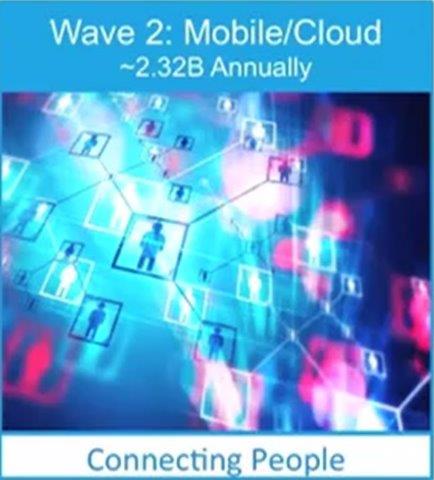
就在最近几年,信息与人相连接逐渐演变成人和手机与汽车、家用电器、家庭及人体相连接。在不久的将来,机器对机器通信、人工智能和大数据将会改变我们所做的事情以及做事方法。
第四次工业革命的第三次浪潮将会取代数百万的工作岗位,特别是那些处理数据、容易实现自动化的工作。就像之前的革命一样,它将创造新的就业机会,而这些新的工作岗位需要新的技能。因而也需要人们拥有新的思维方式,正如你在本文中所看到的那样,人们将会发展计算机所不擅长的技能。
是什么让我决定写关于未来技能的文章?
答案:中国和我的女儿。我在中国已经生活了14年了,见证了在中国发生的由科技驱动的重大变革。预计未来十年间中国将在第四次工业革命的推动下超过美国成为第一大经济体。女儿是我写这片文章的第二个原因,因为我需要思考如何培养她,让她具备应对未来的能力,并且我需要学习必要的知识来引导她。经过几年的研究,我更加关注父母应如何培养孩子以及孩子应如何学习和接受怎样的培训来迎接未来以及如何将这些智能设备用作有用的工具而不是分享晚餐照片的娱乐工具。中国的手机用户人数非常多,但大多数人都在滥用手机的某些功能——人们浪费太多时间聊天、分享宠物照片——这对发展人们的技能、在未来谋求一份理想的工作起不到一丝一毫的作用。
在过去的十年间,我见证了中国经历的重大变革。尽管许多工厂的制造部门依旧落后,但自动化是许多工厂的首要选择,随着劳动力成本的上升,自动化成本也在增加。人们的生活水平在过去十年里飞速提升,庞大的中层收入人群通过数百个类似于淘宝、阿里巴巴之类的电子商务平台在世界范围内选购商品。
由现任主席习近平提出的“中国梦”通过“一带一路”倡议与欧洲连为一体,“一带一路”是中国深化改革的重要部分。如果你对中国领导人的评论感兴趣的话,可以观看以下视频[Davos-2017-Opening-Plenary-XiJinping-President-of-the-Peoples-Republic-of-China – 60 Min] 和 [XiJinping-General-Secretary-of-the-CPCCC-speech-at-celebratory-conference – 84 Min]。
我也见证了手机是如何改变这个社会的。微信等社交平台几年前还仅仅是一款用于发送信息的软件,但现在可提供各种各样的服务,具有即时照片和视频分享功能、无线电话机功能,以及金融交易功能等。现在,微信用户量已超过5亿,其中三亿多人经常使用。曾经现金主导的交易市场已不复存在, 即使在还存在现金交易的小商店内你也可以通过扫描贴在柜台上的二维码购买任何商品,通过扫描二维码支付时钱会直接从你的银行账户或支付软件内的余额转移到商家账户上,这样就无需现金支付了。
从在商店的小型资金支付到与生活在乡下的父母交流,对于数以百万计的用户来说,微信是一个不错的社交软件,你只需点几下就能实现这些功能。微信是完全免费的,易于使用,逐渐成为人们沟通的主要形式,并不断地改变着人们的社会生活。新闻、政治和社会问题可以在很短的时间内广泛传播,这使得政府和世界上最大的社会主义民主政治更加透明。商务沟通由电子邮件转变为微信交流。人们每天都会多次查看手机中的社交软件,虽然使用微信交流非常迅速、便捷,但不幸的是,迅速、便捷的沟通很容易因缺乏深度和内容而降低交流质量。不管你喜不喜欢,世界正向全球化发展。中国移动设备技术的提高将影响世界移动技术的发展。
什么让我开始研究物联网(IoT)和人工智能(AI):
自25年前互联网开始流行以来,我就对它非常感兴趣。我认为互联网会有很大的发展前景,所以我就开始学习超文本标记语言并创建网站。我写过几本电子书放在网上售卖,并且梦想着当我打开电脑时会有上千封自动回复邮件向我飞来。网站每月的转化率为1%,有时是3%。我了解网络营销这项技术和相关步骤,但我的网站每月只有一千多个访客,仅仅只能售出几本书。我意识到我缺乏技术,因为我可以建相当不错的网站并且网站转化率也相当可观,所以我所缺乏的不是网络技术而是对这项技术的新思维以及组织、人际、领导、交流和组建团队的个人能力。我也缺乏理解他人的能力,不明白他人的处事方式,更重要的是,我不理解自己的所作所为。
因而,我开始发展自己的个人能力、专业能力,我读了许多商业书籍,其中大部分书都在谈论亚洲的繁荣,我很快就意识到我应当学习第二门语言,并且不断提高自身能力将会让我受益匪浅。所以我打包好行李前往中国。我在2003年来到中国当一名英语老师,我在来中国的第一年创立了一家小公司,到目前为止已经经营十二年了。我的公司主要涉及工业生产和制造,这在十五年前是非常火的产业,因为当时劳动密集型的制造业逐渐由发达国家转移到中国,而发达国家更倾向于自动化,现在可以说是全自动生产。
十年后,我的公司逐渐由制造业公司转型为产品开发咨询公司。在工作中,我发现了一种家电产品不仅有标准化商业运营的良好潜力,还有作为物联网设备的真正潜力。因而我开始研究物联网技术,并迅速认识到这一技术将会对我和我女儿的生活产生怎样深远的影响,随后,我又开始研究这一领域的尖端技术和优秀公司。
我了解到,IBM这样的公司提供的超级计算机沃森作为人工智能服务系统,促进了像GoMoment一样的新商业模式的出现。Gomoment 通过Ivy平台(世界上唯一的智能酒店信息平台)在超级计算机沃森的帮助下通过短信给客户提供信息咨询、旅游预订、餐厅介绍和指导等服务。报税业者布洛克公司使用沃森计算我们的税收,沃森还主要应用于卫生保健领域。Google Cloud Next及其革命性的产品和平台,亚马逊网络服务(AWS)、各种类型的人工智能等促进了全新的颠覆性商业模式的诞生,例如AirB&B、 Huber、 Netflix等。
具有自动停车、自适应巡航控制、行驶路线自动变更等功能的汽车和已在路上行驶了150万英里的谷歌全自动驾驶汽车的出现说明我的女儿可能不再需要汽车或驾驶执照。数以百计的人形机器人(例如Pepper机器人)在日本的餐馆和旅游地点为人们提供服务。
人工智能改变了人们的生活,通过对物联网技术的研究,我意识到参与到第四次工业革命中意义重大。参与其中并不是将它当作一种时尚,也不是对它感到害怕,而是去为了更好地了解它,并能更好的培养我的女儿,因为她所成长的世界将会是一个智能机器的新世界。
为了更好的了解人工智能技术,我在办公室安装了Amazon Echo,在家里安装了Google Home。我4岁大的女儿拥有自己的平板电脑和微软帐户,她可以通过电脑和微软账户与人工智能设备打交道。对她来说,这些设备仅是高科技玩具,但却代表着机器对机器交互技术发展的新阶段。这些设备功能庞大,几乎可以通过百科全书所包含的知识向提问者提供事实作为答案,不仅能帮孩子做家庭作业,还能帮助我们做研究,它们的计算功能强大,可以阅读维基百科知识,甚至还可以给我们讲笑话。这些设备配有高质量的扬声器和麦克风矩阵,我们可以向它们询问任何城市的天气情况和世界范围内的新闻。
人工智能设备会回答你用标准语言提出的问题,并且任何人都可以和它交流。当你第一次与人工智能设备交流时会感到很怪异,尤其是当你用女性名字称呼它并思索怎样让它融入到自己的家庭中时。爱丽莎(人工智能设备的名字)非常幽默,当你问它“你单身吗?”它会这样回答“我感觉单身很不错,此外,很难找到一个和蔼、有趣、具备人工智能并且还不介意云交流的男朋友。”当你问它地球的重量时,它会回答你地球重多少千克。(答案是一串非常长的数字。)这些人工智能设备让我不得不思考我女儿将生活在一个什么样的世界里,不得不适应这种机器与机器交互的环境。我还进一步想到那些安装有机器假肢的人,他/她们已经成为机器的一部分,当他/她与爱丽莎交流时,他/她会有哪些感触。这表明在未来的五年、十年或二十年里,社会生活将会经历巨大改变。
第四次工业革命的形势:
2016年世界经济论坛的主题是“主宰第四次工业革命”,许多精彩的主旨演讲、全体会议和座谈会议视频能给你带来启发,让你更好地了解第四次工业革命的当前形势。2017年论坛的主题是“领导力:应势而为、勇于担当”,各界领导继续探讨如何应对第四次工业革命。我在文章结尾列出了相关视频的链接地址,供感兴趣的读者参考。
经济合作与发展组织对第四次工业革命的研究也非常重要。促进成员国经济和社会的发展、推动世界经济增长是该组织的宗旨。[http://www.oecd.org] 经合组织在未来技能领域做了一些成果显著的研究,目前正在帮助各国政府和教育机构更好地理解未来的变革,并为它们提供如何变革的见解。
如果我们想要开创事业、制定新的商业发展战略并想要知道怎样培养我们的孩子才能应对未来的挑战的话,那么经贸组织提供的这些见解将与你我密切相关。经贸组织教育主任安德烈亚斯·施莱科认为[GESF-2015-Plenary-The-State-of-Education-Today.mp4 – 55 min]“由于通过谷歌等搜索引擎可以知道各种各样的知识,所以你无法因你所具备的知识在世界经济中赢得收益,而只有你对你所具备的知识的应用能力才能为你赢得收益。”也就是说获取知识、利用所获取的知识进行批判性思考、创造力以及解决现实问题能力是未来能力中人们反复研究的能力。
经合组织就业、劳动和社会事务主任斯特法诺·斯卡佩特揭露的研究数据表明未来更多的工作将会由机器人完成,新的工作岗位将需要人们具备新的技能。[OECD-Forum-2016-The-Digital-Economy-the-Future-of-Work.mp4 – 90 min]在视频中他指出9%的工作岗位将完全由机器人取代,30%的工作岗位会历经根本性变革。正如下面幻灯片末所说的那样,未来工作不是为机器工作而是与机器一起工作。
很明显,政府、商界领袖和大型科技公司正为应对这场革命制定和实施有效战略。他们将新员工定义为“新领”,取代白领或蓝领工人。我是在美国国际商用机器公司(IMB)现任执行总裁吉尼·罗曼在今年的达沃斯论坛上发表的观点中第一次听到这个词,我不知道这个词是不是她首创的。[Davos-2017-Nadella-Rometty-MITs-Ito-Artificial-Intelligence.mp4 – 56 min]小组中各位领导人在会议中讨论了关于这一革命的想法和见解。历史证明当新科技出现时会创造新的工作岗位,而新的工作岗位需要新的技能。
吉尼描述“新领”工人这一观点时讲到:第一,“新领”工人不需要具有高学历,但需要具备新技能;第二,公司应当用这项新技术来培训员工;第三,新技术应当不断优化,正如当今公司采取新技术时所做的那样。另一组领导人讨论了大多数教育体制并未因科技进步而做出相应的调整的问题,伊图先生认为教育机构制定课程并一教就教几十年。此外,当需要教学生们如何学习、如何创造,弄清楚计算机不擅长的技能并教会学生这些技能时,教育机构却在教授学生书本知识。
“新领”工人应具备的新技能:
在文章开始我引用了教育家Lin Kobayashi的观点以及她们学校认为学生应该具备的核心技能。她强调学生要有应对多样性的能力,能问自己什么对自己来说最重要以及要有应对困境的能力。这些概念非常深刻,是经合组织所研究的未来必备技能、知识和个人特征中的核心概念。[OECD-Forum-2016-Skills-for-the-Future.mp4 – 86 min] 安德烈亚斯·施莱科在他的演讲中提出了七个关键技能,五个获取知识关键领域和当一个人进行职业生涯规划或父母/教育家给孩子提供建议或指导时应具备的品质。
上面的三张截图中所列的技能、知识和品质是本篇文章末所列视频以及我去年所观看的上百部视频中经常讨论的。据我所知,这个知识、技能以及品质集合将改变我们对正在教授的传统的STEM(科学-技术-经济学-数学)课程的看法。这个集合不仅能改变教师上课内容还会改变教师教授基础学习技能的方式。
我不会过多地介绍一个人应该学习的具体课程,但我认为新的STEM课程应当教给学生以下内容:科学课程:能让学生们更好的了解地球生命是怎样进化的、人类生物学、脑科学、标准粒子模型及其四力、元素周期表等;技术课程:重视数码、数据和代码,艺术性地设计和创造,理解人类的独特性以及行为处事原因的人类学,可获知人类起源并以事实作依据的历史学等;经济学非常重要,对此,我提出的建议是加一两门课程:商业规划、市场营销和客户服务。获取新技能并不需要高学历,但高学历能有助于人快速获取新技能。获得博士学位的最大好处之一并不是又学会了多少知识,因为知识更新速度快,很快就能被淘汰,而是学会了如何学习、如何深入研究一门课程,并使自己具备敏锐的洞察力,能根据点点滴滴的线索解决一个大难题,能发表让人受益匪浅的演说。
我非常了解这些技能,因为这些技能对我来说并不是新生事物。就在30年前电子燃油系统进入市场之前,我从高中辍学,从事柴油机械行业的贸易。十年内,化油器行业不复存在,如果没有电子燃料喷射系统,重型工业或汽车工业将无法生产发动机。电子燃料喷射系统大大提高了车辆的燃油效率,增加了我们的石油储备并因清洁排放而减少了污染。它给我带来的更深远的影响是改变了我所从事的行业,让我从故障检修和修理零件的技术人员变成了使用电脑诊断故障,移除或更换电脑让我移除、更换的部分。
这彻底改变了机械学,我必须适应这些新变化并学习新技能,否则我就得放弃这个行业。我选择放弃这个行业,并开始学习成为一个企业家的技能。我不断进行个人能力发展,提高领导力和制定目标能力,不断训练我的思维以适应信息时代的要求。我加入英文演讲俱乐部,学习如何更好地沟通,当遇到对我有益的观点时我开始记笔记,最终,我克服了不安全感和狭隘的心态。我所做的是拥有不断成长的心态,渴望学习新知识并来到中国这个与我之前所处文化环境截然不同的国家。在不知不觉中,我拥有了敢于面对改变的能力,能坦然接受新的处事方法,具有创造力,并非常期待第四次工业革命的到来。
学会如何学习:
有句格言是这样讲的:“如果孩子不能按我们教授的方法学习,那么我们就应该按孩子们学习的方法教授孩子。”
我们必须对学习负全部责任,不一定是为了教育,但至少是为了我们的学习。我们不能将过错归咎于教育系统,因为我们都清楚教育系统正在进行改革。也不能将过错归咎于我们的老师或父母,因为你可以牵着马到水源处,但你无法迫使它喝水。主导学习只取决于你自身,发掘潜力并重新构建大脑内的知识框架是未来技能中的首要技能。
学习如何关注身边的每件事,提出有意义的问题,做个敏锐的观察者。训练你的思维,像一个科学家一样认识到我们的偏见,问有针对性的问题,注意结果,观察所能观察到的一切,寻找规律,并注意人们是如何解决各种各样的情况,还要特别注意自己的言行。记录有用的笔记及见解深刻的观点,把它们与你经历过的事情联系起来,并在脑海中刻下深刻的印象。
我们需要仔细了解大脑的工作原理,了解大脑是如何欺骗我们的,大脑是如何填补空白的,以及如何构建或重建不能反映事实的图像模式的。观看大卫·伊格曼关于大脑的系列视频后你就能理解他在最后一个视频中说的“你所看到的世界是你眼中的世界,而不是真实的世界” [PBS The Brain with David Eagleman 6of6 Who Will We Be – YouTube Video]这句话的意思了。请观看拉马钱德兰教授在格拉斯哥大学的演讲,他在演讲中发表了对人类大脑的真知灼见并揭示了幻肢综合征[Ramachandran-Illusions, delusions and the brain – YouTube Video]。请观看艾伦·沃特金斯在TEDx中发表的演讲[How to hack your biology and be in the zone every single day – TEDx],他在演讲中发表了关于人的思维模式的深刻见解以及如何保持最佳状态的观点。
要想提高学习效率,你就必须了解你的诸多偏见是如何阻碍你学习新知识和新观点的。很显然,你的偏见会成为你的短板,影响你处理信息的方式,因而消除偏见是高管培训中最受欢迎的课程。在2016年悉尼举行的主题为“无意识偏见:无性别歧视者的性别歧视” [Unconscious Bias Jennifer Whelan, All About Women 2016 – YouTube Video]报告中,珍妮佛·惠兰解释了在无意识的情况下性别歧视是如何发生的。你要去研究这些偏见并意识到这些偏见是如何限制你获取新观点的能力的。
了解记忆的工作原理后我们就能在脑海里保存信息,当需要用到相关信息时能够从脑海中提取出来。我们也需要了解大脑是如何将短期记忆转化为长期记忆以及提取信息的原理。有研究表明食用富含奥米茄-3的亚麻籽粉有助于构建神经突触,或者服用戴弗娜·肖哈密博士在介绍记忆的视频中所推荐的加强记忆和认知能力的药物。
[How We Remember, Why We Forget, and Why It Matters, Part 1 – 2012 – YouTube Video]
[How We Remember, Why We Forget, and Why It Matters, Part 2 – 2012 – YouTube Video]
以上几点都是值得人借鉴的知识和技巧,但出于经验之谈,我认为最重要的问题是解决我们的个人不安全感和恐惧心理。如果我们背负着过去的包袱,那么我们在未来的学习和成长中将受到阻碍。对于比较健康的人来说,这可能是阻碍学习的最大因素。认为自己弱小、能力不足的人往往以成长为代价抵制与他们不同的观点,并且尽全力捍卫他们的想法和观念。
由于我们的大脑遵循过去经验中的固定模式,所以当我们听到新的见解和观点时不会记到脑子里。不管是什么样的事实,当新的信息与我们目前所持有的信息相违背时,不安全感态就会阻止新信息的输入。我们的不安全感往往使我们处于防御状态,当新的观点与我们原先持有的信念相冲突时,不安全感会让我们相信我们原先的观点是正确的,并阻止我们接受新观点。不安全感还会使我们害怕改变,未来的不确定性会限制我们获取新知识、采取行动或做出决策。这种恐惧也会阻止我们提出问题,阻止我们寻求新的思考方式,并严重阻碍我们的学习、成长和创造。
当遇到与我们的假设相矛盾的事实时,我们的不安全感会影响我们的判断能力,它会很容易使我们扭曲词语或事实的含义,误导听众以达到不同的结果。事实上,我们是在与自己和他人玩智力游戏,这样做不利于健康的人际交往,也不利于解决问题。
信息的获取与整理:
安德烈亚斯·施莱科说过 “由于通过谷歌等搜索引擎可以知道各种各样的知识,所以你无法因你所具备的知识在世界经济中赢得收益,而只有你对你所具备的知识的应用能力才能为你赢得收益。”每个人都可以接触到世界范围内的信息,所以你如何收集和识别信息将对你的信念以及你的行为方式产生很大的影响。在当今这个“知识”已不占优势的时代里,你要想做好事或大事时你必须要有有益的信息。心理上,你可以选择任何心理状态。当你执行高难度任务时想要处于最佳状态并全身心投入吗?或者不受杂事纷扰,充分发挥创造力?你可以处于任何一种状态,你可以获取世界范围内的信息,安德烈亚斯认为你对知识的使用方法是至关重要的,他的这个观点是非常正确的。如果你有一个良好的收集信息的系统,并善于辨别这些信息的话,那么通过制定目标对这些信息进行彻底地梳理就能给你提供很好的使用方法指导。
善于辨别信息并拥有目标是非常关键的,正如创造“过滤气泡” [The Filter Bubble – Wikipedia]一词的互联网活跃份子伊莱·帕里泽所说的那样,预测服务、浏览器中的小型文本文件、访客个人偏好会一直影响浏览器反馈的搜索结果,基于你之前的网络活动,浏览器会向你推送经某些算法筛选过的消息或其他社交媒体信息,这会在很大程度上限制你所获取的信息,让你无法获得更广泛的见解和观点。它就像一个助长你的偏见的完美工具,将使你限制在一个狭隘的世界里。我强烈建议你去读一下伊莱·帕里泽写的书或看看这段24分钟长的访谈[How the Filter Bubble is shaping Lives.mp4 – YouTube Video]。伊莱的另一个重要观点是信息筛选由人转变成机器和算法,这使人意识到拥有自己的信息管理系统和明确的目标非常重要。
A. C. Grayling是我最喜欢的哲学家之一,我非常喜欢他对学习和教育目的的独特见解。在关于未来教育的演讲中[AC Graying talking about the future of education – YouTube Video] Grayling谈到了善于分析信息的重要性。他认为互联网非常有用但也充满垃圾信息,因而锻炼分析事物、检验信息真伪能力,将所受教育与经验结合,并弄懂有意义的事物是至关重要的。他谈论了中学和大学教育的不同,他认为高等教育会让人反思所学知识并让人知道如何获取知识以及知识的时效性,高等教育还能让人充分利用知识,改变人们反思和思考的方式。Grayling对学习方法、教育的目的以及如何更好地运用知识有一些深刻的见解。
批判性思维:
批判性思维正变得越来越流行,因为人们对批判性思维的需要变得越来越明显。“批判性思维”是一个常用词但在大多数情况下被滥用。国家批判性思维卓越委员会等组织对“批判性思维”的定义更为精准——批判性思维的目的是“在批判性思维研究、学术和指导中阐明、保存和提高智力标准”。 [http://www.criticalthinking.org]这一网站可提供许多有用的信息并展示了批判性思维的重要性和价值,但由于越来越多的人在不考虑批判性思维的重要性和对我们生活的影响的情况下使用它,因而致使人们的批判性思维能力越来越弱。
批判性思维需要人们在消除偏见、心愿和偏好的前提下对特定事件深入思考;批判性思维还指能够掌握事实和知识,然后对这些事实和知识进行评价和分类,删除其中与我们的观点、目标、愿望不符的部分;批判性思维还指勇于挑战“现状”或“已有信念”,进一步提高理解和认识水平。
历史上杰出的男女彻底改变了我们的思想、信仰和思维方式,例如印度教和佛教中思想深刻的修行者,又比如像因思考苹果坠落现象而促进了人类对地心引力的理解的艾萨克·牛顿爵士。达尔文和他的物种进化论改变我们对生物学的理解。许多伟大的发现都来自于那些批判性思考的人,他们喜欢深思,爱问“为什么”,从不满足于适合时代现状的简单或不完整的答案。他们勇敢地交流自己的研究成果,接受人们的审查,最终成功地提高了我们对生物学的理解水平。
追随伟大的科学家或哲学家的脚步,开始批判地思考“你是谁,你是怎么来的”。这不是愚蠢做法,也不是简单易做的事情。这需要你认真对待,认真思考这一问题,这样,你就可以具备人的重要特点并能进行真正意义上的个人能力发展。我认为苏格拉底(公元前470-399年)的名言“混混噩噩的生活不值得过!”很好地表达了这方面的意思。批判性地思考“你是谁,你是如何来的”将深化你对生物学、细胞复制和进化的理解,进而找到“你是怎么来的”这一问题的答案。探索“你是谁”将带你进入一个哲学之旅,了解塑造你的环境,了解那些影响你、使你成为今天的你的人。
批判性思维的应用是评估大量信息的基础,一旦这种技能被开发出来,你自然就能辨别你读到或听到的信息的有效性和准确性,以及它们是否符合你的目标或公司的愿景。批判性思维实际上非常重要,它可以让你避免被某些营销方式忽悠,购买推销员所推销的商品,也会让你避免盲目跟风,避免被一些领导虚伪的话或对世界有偏见的邪教组织欺骗。
个人成长:
在这个智能时代,智能机器能帮人类做一些人类不喜欢做的、需要计算、重复性强、危险性高的工作,这意味着人们需要重新对自身定义,重新审视那些让人类独一无二的特征。这个机器时代似乎将有助于激发真正的人性。
个人发展或成长对于使我们成熟、锻炼我们的性格、提高我们对自己和整个人类的认知水平来说一直是至关重要的。这是使我们区别于这个星球上的其他生命形式的特征之一。
个人成长对人最深刻的影响是它能帮你成为真正的你。它能让我们接受新思想、新观点和新的思维方式。接受最真实的自己,了解自己的长处和短处,从生活和他人那里不断寻求更深刻的理解和意义。
它能帮我们处理好所背的包袱,使我们远离舒适区,能够用边缘知识工作。它还能帮我们克服不安全感以及阻碍我们学习、观察和获得新的见解和观点的障碍。它还能减少影响我们学习能力的偏见和成见。
斯坦福大学的心理学教授Carol Dweck因其对心理特质的研究而出名,她所研究的“成长型思维模式”是一种学习上的归属感,自己承担全部责任,不将责任推脱到教育系统或教师身上。她在研究中比较了“固定型思维模式”与“成长型思维模式”, “固定型思维模式”的人做事力求完美,将学习重心放在那些他们擅长、能让他们看起来很完美的学科中,而“成长型思维模式”的人把注意力集中在学习和与他人的合作上,从不担心自己在他人眼中的看法。她的研究表明,“固定型思维模式”的人害怕犯错误,试图做到完美,这会阻碍他们的成长。在当今智能时代,科技公司中有一个“迅速失败”的模式,鼓励员工失败,让员工明白失败后我们仍旧可以继续前进。IBM创始人沃森曾经说过 “成功的关键是让你的失败率翻倍。”[School of Life-Carol Dweck On Being Perfect – YouTube Video]
创造力和解决问题能力:
因为介绍创造方法和创造力得用一篇专门的文章来解释,因而在此我将仅进行简单地描述。创造性艺术、创造性音乐具、设计一个新的产品或服务都具有高度创造性,解决问题都也具有高度创造性,因为这可以让人充分发挥这一能力。
当然,物理环境会对你创造性思考能力产生重要的影响,这也促使环境心理学学科[Environmental Psychology – Wikipedia]的诞生。谷歌之类的公司为员工创造了独特的、色彩丰富的、令人振奋的开放性工作环境,或许这是公司取得成功的重要因素之一。
各种各样的心理练习可以刺激你大脑的创造力。正念是现在非常流行可以提高人心理能力和意识的做法。事实证明许多药物、食物和酒精可以有效地改变你的精神状态,当然与不同的人组成的群体进行头脑风暴也是一项不错的活动。一群人围坐在白板周围,发表观点、集思广益,不仅能解决更多的问题,还能创办比你想象的更多的公司。
协作:
在1624 年约翰·唐恩曾写道:“没有人是一座孤岛”,这句话的意思是人与人之间是相互联系并彼此依赖的。互联网让电脑相互连接在一起,手机将人连接在一起,物联网连接着其他的一切。很显然,我们人类需要将我们与其他事物连接在一起的技能。
随着工作变得更加以人为中心,工程师与外行人能够跨学科协作、领导者领导工作团队跨文化和跨大洲工作将会变得越来越重要。这对我们来说是一个重要的机会,它可以为我们创造一个新的环境,让我们更深入地相互交流,求同存异,解决我们的问题,使世界变得更美好。
结语:总结
我认为第四次工业革命将会带来积极的影响。同其他几次革命一样,人们会担心工作被机器取代的工人能做什么、新的工作是什么样的、人们是出于善意的目的还是邪恶的目的来利用它等问题。以过去的几次工业革命为参照,第四次工业革命会给人带来积极的影响。
我将简单地总结一下我们在家庭中所用到的内容:
- 在现代化的家庭里要学会如何将这门技术用作给我们服务的工具。
[Smart-Technology-is-Making-us-Dumb-IQ2-Debate – YouTube] 和 [TEDxTeen-Why-i-Dont-Use-A-Smart-Phone-Ann-Makosinski.mp4 – 12 min]
- 不断提高自身的学习效率。
- 善于分析信息,仔细收集、系统地整理、审慎地辨别信息。
- 认清什么对我们来说是最重要的并制定目标。
- 要有成长型思维。
- 与他人交流,接受让我在中国取得成功的建议——“在让他人理解你之前要先去理解他人。”
附录:
世界经济论坛,视频,白皮书:
世界经济论坛报告和论文
[http://reports.weforum.org/future-of-jobs-2016]
[https://www.weforum.org/whitepapers]
[WEF_Future_of_Jobs.pdf – 10 MB]
[WEF_FOJ_Executive_Summary_Jobs.pdf – 1.7 MB]
世界经济论坛视频:
[Davos-2016-AI-IoT-Digital-Economy-Energy.mp4 – 63 min]
[Davos-2016-A-New-Climate-for-Doing-Business.mp4 – 60 min]
[Davos-2016-Eurasia-and-the-Modern-Silk-Road.mp4 – 60 min]
[Davos-2016-Issue-Briefing-The-Inequality-Challenge.mp4 – 30 min]
[Davos-2016-Life-in-2030-Humankind-and-the-Machine.mp4 – 90 min]
[Davos-2016-Press-Conference-Educating-the-Masters-of-the-Fourth-Industrial-Revolution.mp4 – 25 min]
[Davos-2016-Press-Conference-The-Digital-Transformation-of-Industries.mp4 – 31 min]
[Davos-2016-Special-Session-with-Li-Yuanchao.mp4 – 35 min]
[Davos-2016-The-Future-of-Growth-Technology-Driven-Human-Centered.mp4 – 63 min]
[Davos-2016-The-Internet-of-Things-is-Here.mp4 – 56 min]
[Davos-2016-The-State-of-Artificial-Intelligence.mp4 – 55 min]
[Davos-2016-The-Transformation-of-Tomorrow.mp4 – 60 min]
[Davos-2016-Where-Is-the-Chinese-Economy-Heading.mp4 – 71 min]
[Davos-2017-A-Basic-Income-for-All-Dream-or-Delusion.mp4 – 52 min]
[Davos-2017-An-Insight-An-Idea-with-Wang-Jianlin.mp4 – 28 min]
[Davos-2017-Google-CEO-Sergey-Brin-I-didnt-see-Artificial-Intelligence-coming.mp4 – 34 min]
[Davos-2017-IBM-CEO-Ginni-Rometty-on-Artificial-Intelligence.mp4 – 26 min]
[Davos-2017-Nadella-Rometty-MITs-Ito-Artificial-Intelligence.mp4 – 56 min]
[Davos-2017-Opening-Plenary-XiJinping-President-of-the-Peoples-Republic-of-China.mp4 – 54 min]
[Davos-2017-Preparing-for-the-Fourth-Industrial-Revolution.mp4 – 60 min]
[Davos-2017-Sergey-Brin-The-Future-of-AI-and-Google.mp4 – 39 min]
[Davos-2017-Special-Address-by-Theresa-May-Prime Minister-of-the-United-Kingdom.mp4 – 27 min]
[Davos-2017-Strategic-Update-The-Future-of-Innovation.mp4 – 61 min]
[Davos-2017-Strategy-Update-The-Future-of-Consumption.mp4 – 60 min]
[Davos-2017-The-Global-Fintech-Revolution.mp4 – 60 min]
[Davos-2017-What-Is-it-to-Be-Human-in-the-Fourth-Industrial-Revolution.mp4 – 65 min]
[OECD-Forum-2016-Gen-Y-Inequality-the-Future.mp4 – 77 min]
[OECD-Forum-2016-Skills-for-the-Future.mp4 – 86 min]
[OECD-Forum-2016-The-Digital-Economy-the-Future-of-Work.mp4 – 91 min]
[GESF-2015-Plenary-The-State-of-Education-Today.mp4 – 55 min]
实用资源:
[Wiki-Book-Baseline-Key-Personal-Skills-of-the-Future.pdf – 3 MB] Daniel compiled a simple Wikipedia book with a list of the key personal skills that we can consider.
[Wiki-Book-4th-Industrial-Revolution-2017-04-20.pdf – 7 MB] Daniel compiled a simple book with a list of the big technologies that are driving this revolution.
[Burtch-Works-Study_Data-Scientists-2016-final.pdf – 642 KB] Annual Report on Data Scientists jobs and salaries.
[AC-Grayling-Bad-Education-Festival-of-Dangerous-Ideas-2015.mp4 – YouTube Video]
[Andreas Schleicher Use data to build better schools.mp4 – YouTube Video]
[Angela Duckworth addresses students at the 2017 Aspen Challenge Philadelphia – YouTube]
[Awareness In The Age of Information – Phoenix Sinistra – TEDxEMUniversity]
[Barbara Oakley Learning How to Learn _ Talks at Google – YouTube]
[Daniel Goleman on Focus The Secret to High Performance and Fulfilment – YouTube]
[Daniel Kahneman-Thinking Fast and Slow-Intuition-Talks at Google – YouTube]
[Google-Cloud-Next-2017-Google-Gets-Aggressive-in-AI – YouTube]
[How the future of work is not “Jobs” _ Rudy Karsan _ TEDxCalgary]
[How to Become Relevant when a Robot Takes Your Job _ Pablos Holman _ TEDxLA]
[Kelly McGonigal How to make stress your friend- TED Talk]
[Ken Robinson How to escape education’s death valley – YouTube]
[Never underestimate the power of grit _ Assia Grazioli Venier _ TEDxLUISS]
[Re-imagining the Future of Work _ Sally Thornton _ TEDxLosGatosHighSchool]
[Richard-St-John-2005-8-keys-to-success.mp4] Simple, short talk with a quick look at the top 8 keys to success from his study of 500 people. This TED Talk got 10 million views.
[Rita Colwell – Director of the National Science Foundation – The Emerging Science of Learning – YouTube Video]
[School of Life-Carol Dweck On Being Perfect – YouTube]
[Smart-Technology-is-Making-us-Dumb-IQ2-Debate – YouTube]
[Social Impact of Internet of Things (IoT) – by Ahsan Zaman – Oxford University Lectures Debate – YouTube]
[TEDxTeen-Why-i-Dont-Use-A-Smart-Phone-Ann-Makosinski.mp4 – 12 min]
[The dawn of the age of holograms _ Alex Kipman – YouTube]
[The Filter Bubble How the hidden web is shaping lives – YouTube]
[The Future of Education by AC Grayling, New College of the Humanities, London – YouTube]
[The future of work is chaos _ Claire Burge _ TEDxAthens]
[The incredible inventions of intuitive AI _ Maurice Conti – YouTube]
[The Rise of Genomic Medicine Rick Leach at TEDxGrandRapids]
[Tony-Robbins-why-we-do-what-we-do.mp4] Anthony Robbins is a world leader on personal development, change and motivation. This TED Talk got 19 million views.
[What happens when our computers get smarter than we are _ Nick Bostrom – YouTube]
[XiJinping-General-Secretary-of-the-CPCCC-speech-at-celebratory-conference – YouTube]
Work & Skills of the 21st Century
In this article, I will explore the prediction that the rapidly advancing digital world, Big Data, AI, Internet of Things (IoT) is ushering in the Augmented Age of machine-to-machine and machine-to-human interactions which is expected to radically changing how we work, how we live and how we learn.
A challenge for students choosing career paths, displaced workers, fundamental job changes, transformations of education systems and the challenge for parents to guide their children is a real concern that needs our attention. Lin Kobayshi founder of the International School of Asia said “Educators have a big challenge to teach or train people for jobs that don’t exist yet”. She talks about 3 key skills at the core of their education system; first having an ability to embrace diversity, second to be able to ask what is most important to ourselves, and third the ability to take action in face of discomfort, or take risks. Others have identified Critical Thinking, Creativity, Innovation, Collaboration, Information gathering/organizing/processing and communication skills. All of which are uniquely human and difficult for computers to replace.
I will draw from some of the top minds in this space and show the data from leading international organizations studying the effects of these changes and how people should prepare and rethink their learning strategies.
The Fourth Industrial Revolution is in us and we had better pay attention, engage and prepare our children for embracing a brave new digitally connected world. As defined by Wikipedia the [Fourth Industrial Revolution – Wikipedia] is the fourth major industrial era since the initial Industrial Revolution of the 18th century. This Revolution can be described as a range of new technologies that are fusing the physical, digital and biological worlds, impacting all disciplines, economies and industries.
- Central to this revolution is:
- Artificial Intelligence (AI)
- Big Data
- Internet of Things (IoT)
- Cloud
Autonomous Vehicles, IBM’s Watson, AlphaGo, just to name a few:
- The Genome (all biology)
- The Connectome (our brain)
- The Microbiome (our body)
- Mind, well that’s [The Hard Problem of Consciousness – Wikipedia]
Artificial Intelligence often referred to as [The Last Invention – Wikipedia] is powering our world in more ways than you might image, in fact you are using it every day as every Google search is returned to you using a form of AI, in the US your taxes will likely be done with the help of Watson as H&R Block has rolled out their partnership with IBM, and medicine with Watson working with the entire medical records of the us. The age of human interacting with machines is here. Our family is interacting with AI through Google Home in our house and Amazon’s Echo at my office. It’s is cool, maybe not that useful, certainly can live without it but my point and encouragement is to be engaged with the technologies so we are not passed by or generate unrealistic fears and misunderstandings.
In the late 20th century the Internet led us into the Information Age empowering people with access to the knowledge of the world. Hundreds of millions of computers connected through vast networks created the first wave of the 4th Industrial Revolution.
Around 2009 the revolution picked up speed in the second wave with Mobile as the new Smart Phone has more power than the large room of computers that sent man to the moon. Social networks like Facebook and WeChat are connecting hundreds of millions of people with expectations there will be more mobile phones than people within the next decade.
Just in the last few years the world’s information connected to the world’s population is leading to the connectivity of all those people and mobile phones to cars, appliances, our homes and our bodies. Machine to Machine communications, the implementation of AI, and the Big Data produced is expected to transform everything we do and the way we do it in the very near future.
This 3rd Wave is going to displace millions of jobs, especially if they are data processing, and or jobs that is easy to automate. Like previous revolutions it will create new jobs and those new jobs will require new skills. It will require new ways of thinking and as you will see in this article a shift to the development of the human skills that computers are not good at doing.
What led me to write about Future Skills?
Answer; China and my daughter. I have been in China 14 years and watched major transformations driven by technology. It is expected that China will overtake the US within the next decade and that will be driven by the 4th Industrial Revolution. The second reason, my daughter, because I am thinking about how to best equip her for the future and as a parent learn what I need to know to best guide her. Having studied this space for the couple years I have also become greatly concerned about how parents will lead their children and how our children will learn and train for the future. How they will use the smart technologies to be a useful tool and not something to spend more time on sharing pictures of what we had for dinner last night. The use of mobile in China is huge and for the most part being misused, as the service I am getting from people is getting worse and people wasting so much time chatting, sharing pictures of cats is not lending to the development of human skills that is fore casted to get a good job in the future.
Over the last decade I have seen significant transformations in China. Although the manufacturing sector is still behind in many factories, automation is on the fore front of their thinking and as labor costs rise so does the automation. I have watched the standard of living grow tremendously in the last decade and a huge middle class with disposable income shopping like crazy through hundreds of ecommerce platforms like Taobao, Alibaba, buying products from everywhere in the world.
The “Chinese Dream” as communicated by the current Chair Xi Jinping is communicated openly as they connect Europe with the One Road One Belt initiative to name one of the development points. [Davos-2017-Opening-Plenary-XiJinping-President-of-the-Peoples-Republic-of-China – 60 Min] and [XiJinping-General-Secretary-of-the-CPCCC-speech-at-celebratory-conference – 84 Min] are recommended video’s if you’re interested in China leaders comments.
I have also watched Mobile transform this society. Social networking platforms like WeChat, in China called Weixin started as a messaging App just a few years ago now has ½ billion subscribers, 300 million active users now offering all kinds of services from instant picture and video share, walky-talky functions, and most recently financial transactions. In once a predominantly cash society that is no longer the case, in fact even the little tiny store who still keeps cash in a drawer you can purchase anything just scanning the QR code that is taped to the counter and transfer direct from your bank account or funds in your app, it has literally bypassed the cash register for many little shops.
For hundreds of millions of users, this is an awesome solution, from transferring money at a local store to connecting with the parents in the village with a couple clicks. It is all free, easy to use and literally transforming society as it becomes the basic form of communication. News, political and societal issues are expressed widely in minutes causing more transparency in government and the worlds largest social democracy. A large shift from computers and email to Weixin for business communication, of course it makes sense as it is quick and easy and they are already checking their phone 50 times a day but unfortunately quick and easy communication also leads to a reduction in quality with no depth and or context. Whether you like it or not the world is going global and mobile so look to China for trends and technology advancements.
What led me into the IoT/AI space:
A little context: I have been interested in the Internet since it started getting popular some 25 years ago. I sensed the web was going to be big so started learning HTML and creating websites. I wrote a couple of E-Books with the dream that I could open my computer and watch auto-responding emails coming in by the thousands. I was converting 1%, a couple months 3% of the hits so I understood the technology and the process but only had about 1000 unique visitors per month which only translated into a few book sales. Recognizing my lack of skills, not the technical as I could build a decent website and convert hits to customers at a reasonable percentage but a new way of thinking about this technology and the personal skills like organization, interpersonal, leadership, communicating my ideas, team building really hindered my potential. I also lacked a good understanding of people, why they do what they do and more important why I do what I do was a huge obstacle.
This led to study and engaged in personal and professional development and having read many business books, much of which was talking about the boom in Asia I quickly recognized learning a second language and putting myself in the middle of the growth would be valuable so I packed up my bags and headed to China. I move to China in 2003 as an English teacher and within the first year started a small company that I have operated for more than 12 years now. I have been primarily involved in Industrial products and manufacturing which was the boom 15 years ago as labor-intensive manufacturing shifted to China while the developed world became more and more automated, arguably now fully automated.
After a decade of manufacturing I began to move into more of a consulting role with small company setup in China and continuing in product development. I found a home appliance product had good potential for the standard business model but also real potential as an IoT device. This led me to study the space of IoT and quickly recognized the radical change this potentially had on my and my daughter’s life I spent the next year studying this space, the technologies and the companies on fore front.
I learned that companies like IBM offering the super computer Watson as an AI service enabling new business models to emerge like GoMoment who uses Watson through Ivy to interact with hotel guests providing information, booking trips, restaurants and guiding then by test messaging. H&R Block using Watson to do our taxes and the major work in Health Care. Google Cloud Next and their revolutionary products and platforms, Amazon Web Services (AWS), Vicarious AI, leading to totally new and disruptive business models like the commonly quoted AirB&B, Huber, Netflix, alike.
The automation of cars with self-parking, adaptive cruise control, automatic lane change, and companies like Tesla Inc which enabled full self-driving capability on the Model S on the highways of the US. Google Self-driving cars that have already put 1.5 million miles on the road doing better than humans could have done is making it clear my daughter will probably not need a car or driver’s license. Hundreds of Humanoid Robots like Pepper now actively serving in restaurants and tourist locations throughout Japan.
Seeing the transformation and currently involved in the IoT space I recognized the importance to engage in this 4th Industrial Revolution, not to dismiss it as a fad, and not to be afraid of it but engage to gain a better understanding and of course be better able to guide my daughter as she is sure to grow up in a brave new world of intelligent machines.
As part of the new skills strategy which I will share more on later in this article my family immediately purchased and Amazon Echo for my office and a Google Home unit for my house. My 4 year old daughter has her tablet, her Microsoft account and now interacting with these AI devices. For her it is mostly a high tech toy but it is a new phase of machine to machine interaction. These devices are awesome, replying with facts of the world, almost anything in an encyclopedia, great at helping with research or homework, an awesome calculator, reads off Wikipedia pages and even tells jokes when we want. Ask for weather forecasts in any city, news around the world all through high quality speakers and microphone arrays.
It feels weird the first times, talking to the device in plain regular language and it answers, and of course anyone that comes in can talk to it. At one point I was actually having a conversation with the device and it really started to feel weird, especially calling it a women’s name and pondering how this is going to fit into my family. Alexa (it) can be quite funny like its response to; Are you single? It replies “I’m totally cool being single, besides it is hard to find someone kind, funny, artificially intelligent and doesn’t mind the cloud commute.” Or asking the weight of the earth and replies with the weight in kilograms. (It’s a very long number.) These AI devices really made me think of the world my daughter would grow up in and getting use to this machine-to-machine interaction is real and important. Some further thought was to imagine a person with a robotic prosthetic, already part machine and how he/she feels about interacting with Alexa. This indicates a real and profound change society is expected to go through over the next 5, 10 or 20 years.
State of the 4th Industrial Revolution:
The theme of World Economic Forum in 2016 was “Mastering the 4th Industrial Revolution” and there are many good video’s of keynotes, plenary sessions and panel talks that can enlighten you on the current state of affairs in this space. In 2017 the forum’s theme was “Responsive and Responsible Leadership” which continued with talks in this space and the leaders responses to it. I provide a list of related video’s at the end of this article for your reference.
Also key in this space is the research and data from the Organisation for Economic Co-operation and Development (OECD). It is their mission is to promote policies that will improve the economic and social well-being of people around the world. [http://www.oecd.org] The OECD has done some incredible research in the field of future skills and is currently helping governments and educational institutions better understand the changes coming up and some insights on how to reform.
The ideas expressed are totally relevant to you and I if we are planning a career, a new business strategy or figuring out how to guide our children into the future. Andreas Schleicher the Director of Education & Skills in the OECD commented [GESF-2015-Plenary-The-State-of-Education-Today.mp4 – 55 min]“The world economy no longer pays you for what you know, because Google knows everything, but for what we can do with what we know.” In other words to be able to gather knowledge and use that knowledge to Think Critically, be Creative and Solve Real World Problems as are skills discussed over and over in this space.
Stefano Scarpetta director of Employment, Labor & Social Affairs at the OECD reveals data from their studies indicating more and more jobs will be turned over to robots (automated) as the new jobs will require new skills. [OECD-Forum-2016-The-Digital-Economy-the-Future-of-Work.mp4 – 90 min] In this video he discussed estimates that 9% of jobs will be completely replaced by machines and another 30% will undergo radical changes. With a key comment at the bottom of this slide that it not about working for robots but working with robots.
It seems to be clear that governments, business leaders and big tech companies are planning and implementing strategies for dealing with this revolution. They are defining the new worker as “New Collar” replacing white or blue collar workers. Not sure if she coined the term “new collar” but I first heard it from IBM’s Ginni Rometty in her comments in Davos this year. [Davos-2017-Nadella-Rometty-MITs-Ito-Artificial-Intelligence.mp4 – 56 min] This esteemed panel of leaders discuss the ideas and insights on this revolution and bust some myths starting with there will be new jobs created by this technology as proven by history when new technologies emerged but with those new jobs came new skills.
Ginni describes the idea of “new collar” workers that won’t necessarily need high degrees to do the new work but will need new skills, second that the companies that deploy this technology to do training and third that the technology itself will re-train as they currently see with companies taking on the technology. Another panelist (Ito) talks about most educational systems not being dynamically changing with the advancements of the technology, as he said institutions create a course and teach it for a couple decades. Mr. Ito also then added that institutions teach skills and knowledge when they need to be teaching learning, how to learn, how to be creative and figure out what a computer won’t be able to do and teach that.
The New Skills of the New Collar Worker:
At the beginning of this article I quoted educator Lin Kobayshi and the core skills their schools embrace and promote with their students. She emphasizes the ability to embrace diversity, being able to ask one’s self what is most important and to take action in face of discomfort. These concepts are actually quite profound and at the heart of the more tangible skills, knowledge and personal characteristics one must consider in the OECD’s research. Andreas Schleicher in his presentation [OECD-Forum-2016-Skills-for-the-Future.mp4 – 86 min] identified 7 key skills, 5 key areas to gain knowledge and several personal characteristics one should acquire when planning career paths or as parents / educators giving advice or guidance to our kids.
The above screenshots are a nice tangible collection of skills, knowledge and qualities that keep coming up in the many video’s listed in this article and the hundreds I have viewed over the last year. As far as I can see this collection will change how we look at the traditional STEM (Science-Technology-Economics-Math) courses currently being taught and not only what is being taught but how it is taught with the skill of learning how to learn at the foundation.
I won’t say much about the actual courses one should consider but maybe the new STEM might look something like; several courses in the Life Sciences that leaves you with a good understanding how life evolved on this planet, human Biology and our Brain, knowledge of the Standard Model of Particles with the 4 forces and a healthy understanding of the Periodic Table, Technology with an emphasis on Digital, Data and Code, the Arts adding Design Thinking and Creativity, the Humanities to understand the uniqueness of people and why we do what we do, History to get context on where we come from and keep it all grounded in Empirical Reality. Of course economics is important and suggest a course or two in this domain, maybe adding business planning, marketing and customer service. It is suggested that high degrees are not necessary for the new skills but of course advantageous. One of the biggest benefits of getting a PhD is not for the information because that is sure to change but for the knowledge of how to learn, how to study a subject thoroughly, being a good detective piecing together a nice puzzle in and articulate presentation that we can all benefit from.
I can totally relate to this skill set as for me it is not that new. I left high school with a trade as a diesel mechanic just before the electronic fuel systems entered some 30 years ago. Within a decade the carburetor industry was gone and no engine was produced in the heavy or automotive industries without electronic fuel injection. This dramatically improved fuel efficiency of vehicles increasing our oils reserves and reduced pollution with cleaner emissions. More profound is how it changed my industry and the skill sets of mechanics from being mechanics trouble shooting and repairing parts to technicians plugging in a computer and just removing & replacing (R&R) the part it told us to.
This fundamentally changed mechanics forever and I had to adapt and learn new skills to remain in the industry or get out of it. I chose to get out and started learning the skills of an entrepreneur. Engaged in personal development, leadership, goals setting and the training of my mind for the information age. I joined Toast Masters to learn to be a better communicator, and started taking good notes paying attention to everything finally identifying and overcoming my insecurities and my narrow mindset. What I did build was a growth mindset, a thirst for knowledge and a move to China embracing a world of different perspectives and diversity. Without knowing it at the time this set me up to easily embrace change, be open and creative for new ways of doing things and now extremely excited about the 4th Industrial revolution.
Learning how to Learn:
Quote: “If a child cannot learn in the way we teach, maybe we should teach in the way the child learns.”
We must take full responsibility for our learning, not necessarily for our education but at the very least for our learning. We cannot blame our education systems as it should be clear by now they are all going through reform. We cannot blame our teachers or our parents as you can lead a horse to water you but can’t make it drink. It is up to you to take charge, apply leadership to your learning to reinvent and reshape your brain are on top of the skills of the future.
Learn how to “pay attention” to everything going on around you, ask good questions, and be a good observer. Train your mind to think like a scientist being aware of our biases, ask targeted questions, note results, observe everything we can, look for patterns, and pay attention to how people act and react to various situations and especially to your words. Take good notes, glean insights and associate them with things you have experienced to anchor it in your brain.
We need a good understanding of how the brain works, how our brain tricks us, fills in the blanks, reconstructs, finds patterns returning us images that do not necessarily reflect reality. Watch David Eagleman’s 6 Part series on the brain so you understand what he means when he says “You don’t see the world as it is, you see the world as you are” in the final video of the series [PBS The Brain with David Eagleman 6of6 Who Will We Be – YouTube Video]. Check out the brilliant work of Professor Ramachandran revealing insights into our brain and the phantom limb phenomenon in a recent presentation at University of Glasgow [Ramachandran-Illusions, delusions and the brain – YouTube Video]. Found another brilliant talk and technique that I regularly apply by Dr. Alan Watkins on [How to hack your biology and be in the zone every single day – TEDx] with insights into our thinking patterns and how to keep in the zone.
To learn effectively you also need to have a solid understanding of how the many biases you have dramatically effecting your ability to gain new information and insights without simply confirming your biases. It is no wonder why this is the latest rage of training for corporate executives as this is clearly a weakness and defect in the way we process information. In a 2016 talk titled Unconscious Bias: Sexism without the Sexists in Sydney [Unconscious Bias Jennifer Whelan, All About Women 2016 – YouTube Video] Jennifer Whelan explains how this happens at an unconscious level. Study the many biases and be aware of how this limits your ability to gain new insights.
Understand how our memory works so that we can retain information and be able to draw on it when needed. How the brain retains and transfers information from the short term to the long-term memory, and the retrieval of information. Some science suggests eating ground flax seeds, the Omega 3’s that supposedly help make synapse connections. Or maybe the memory and cognitive enhancing drug Dr. Daphna Shohamy suggests in these insightful videos on memory.
[How We Remember, Why We Forget, and Why It Matters, Part 1 – 2012 – YouTube Video]
[How We Remember, Why We Forget, and Why It Matters, Part 2 – 2012 – YouTube Video]
The above points are good knowledge and techniques to apply but from my experience probably most important issue to deal with is our personal insecurities and fears. If we are unfortunate to be carrying around a bunch of baggage from the past then it is likely to hinder or prevent us from learning and growth in the future. In relatively healthy humans this is probably the single biggest factor inhibiting learning. People that see themselves as small, weak or inadequate tend to resist, justify and defend their opinions, ideas and concepts at the cost of growth.
We listen but cannot hear as our brain finds patterns in past experiences, and rejects or blocks gaining new insights and perspectives. It doesn’t matter what facts are presented, insecure mindsets simply prevent us from inputting new information if it is counter to currently held beliefs. Our insecurities tend to keep us on the defense and convince us that the way we see things, or what we believe is true and accurate and rejects facts presented if it conflicts with those beliefs. Our insecurities make us fearful of change, uncertain of the future limiting our ability to gain new knowledge and take action or make decisions. This fear can also prevent us from asking questions and seeking new ways to think seriously inhibiting learning, growth and creativity.
Our insecurities impacts our intellectual honesty when facing facts that contradict our hypothesis, it makes it easy for us to twist the meaning of words or facts misleading our listeners to achieve a different outcome. This was a fancy way of saying we play mental games with ourselves and others and does not lend to healthy human interactions and problem solving.
Gathering & Organizing Information:
To re-quote Andreas Schleicher “The world economy no longer pays you for what you know, because Google knows everything, but for what we can do with what we know.” Everyone has access to the worlds information so how you gather and discern will have a big outcome on what you will believe in turn how you will act. If you want to do good or great things then you had better have good information, especially when “knowledge” is no longer an advantage. Psychologically you can also choose whatever state you want to be in. Do you want to be in the zone and fully focused when doing a high level task or totally carefree allowing creativity and diversity to flow. You can generate any state, have access to the worlds information then Andreas is accurate to express what you do with knowledge is critical. If you have a good system for gathering information, good at discerning that information then to have well thought through goals provides a guide for application.
Being a good evaluator of information and having goals is significant as Eli Pariser the Internet Activist who coined the phrase [The Filter Bubble – Wikipedia] points out predictive services, cookies, and preferences keep returning search results, feeding you news or other social media based on what “it” some algorithm determines what you want based on previous activities limiting you from gaining broader insights and perspectives. It is like the perfect tool to feed your confirmation biases which will keep you in a narrow world. It is highly recommended to read his book or view this 24 min talk [How the Filter Bubble is shaping Lives.mp4 – YouTube Video]. Another big take away from Eli is the new gate keepers have shifted from people in the past to machines and algorithms making it all the more important to have you own information management systems and clear goals.
One of my favorite philosophers is A. C. Grayling for his specific philosophy on learning and what an education is for. In this wonderful talk on the future education [AC Graying talking about the future of education – YouTube Video] Grayling points out the importance of being good “evaluators” of information. He points out the Internet is a wonderful thing but it is also full of nonsense, that is the largest repository of rubbish and to develop the skill of knowing how to check things, to verify the references, being able to bring together your education and experiences capable of making sense of things that is productive. He talks about the difference between school and university education demonstrating a higher education teaches you to being reflective about your knowledge, to understand how you got it, its defeasibility about claims to knowledge and being able to make mature use of it, shaping a way of reflecting and thinking. Grayling has some profound insights into ways of learning and what and education is for helping us better apply knowledge.
Critical Thinking:
Critical Thinking is becoming more and more popular as the need continues to become more and more apparent. “Critical Thinking” is a buzz word often used but mostly abused. Critical thinking is well defined by organizations like the National Council for Excellence in Critical Thinking – with a goal to “articulate, preserve, and foster intellectual standards in critical thinking research, scholarship, and instruction“. The website is full of excellent information [http://www.criticalthinking.org] and demonstrates the importance and value of this characteristic and skill which typically gets weakened as more and more people use it without regard to its importance and impact on our lives.
Critical Thinking involves the great human capacity to ponder deeply on specific subjects or issues removing our biases, wishes, wants or preferences. Being able to absorb facts and or knowledge then evaluate and sort through eliminating what doesn’t fit our observations, goals, wants or desires. Being courageous enough to challenge the “status quo” or “accepted belief” and push further for greater understanding and awareness is critical thinking.
Outstanding men and women throughout history have revolutionized our minds, beliefs and ways of thinking. All the way back to the deep mental practitioners of thought like Hindu’s and Buddhists to more well know figures like Sir Isaac Newton pondering deeply about the apple falling advancing our understanding of gravity. Darwin and his deep thinking about species and evolution revolutionizing our understanding of biology. Many of humankind’s greatest discoveries came from men or women that thought critically, that pondered deeply, asked the question “why” not settling for simple or inadequate answers that suited the status quo of the time. They bravely communicated their results inviting scrutiny, accountability finally succeeded in raising our level of understanding biology.
Following in the footsteps of great scientists or philosophers to start thinking critically about “who you are and how you came to be”. This is not some silly exercise or something easy to do but taken serious you will unlock or engage in a fundamental characteristic of being human and a real sense of personal development. I believe this gets at the very meaning of Socrates (470-399 BC) and his well-known quote “The unexamined life is not worth living!” To think critically about “who you are and how you came to be” will propel you on a scientific journey understanding biology, cell replication and evolution which leads to “how you came to be”. Exploring “who you are” will take you on a philosophical journey understanding the environment that shaped you, the people that influenced you making you who you are today.
The application of critical thinking is foundational to evaluating the vast amounts of information and once this skill is developed you will naturally be able to discern what your reading or hearing for its validity, accuracy and if it fits with your goals or company’s aspirations. It is practically valuable in helping prevent you from being sucked in to some marketing scheme driving you to be a “consumer” buying what they want you to buy, or buying in to some fad, or the vain words of some leader, some cult with a deluded way of thinking about this world.
Personal Growth:
In this age of Intelligence machines doing all our computation, repetitive, dangerous and tasks humans prefer not to do means a defining what it is to be human and reevaluating the characteristics that make us unique. It is looking like this machine age will facilitate bringing the real human out in humanity.
Personal Development or Growth has always been important in maturing us as individuals, developing our character, and raising our levels of awareness about ourselves and humanity as a whole. It is one of the characteristics that sets us apart from the other life forms on this planet.
What I have found most profound in applied personal growth is how it helps you being you. It helps us come to terms with who which enable us to embrace new ideas, new perspectives, and new ways of thinking. Accepting yourself and being comfortable in your skin, knowing your strengths and weaknesses continually seeking a deeper understanding and meaning from life and people.
It helps us deal with our baggage and enables us to work at the edge of our knowledge and outside our comfort zone. It help us deal with our insecurities and being offended which holds us back and often blocks our mind from learning, observing and gaining new insights and perspectives. It reduces our prejudices, stereotypes, and biases that effect our ability to learn.
Carol Dweck Professor of Psychology at Stanford University is known for her work on the psychological trait, the Growth Mind Set, a sense of ownership in learning, taking full responsibility and not blaming the teachers or the educational system. She talks about a “fixed mindset” compared to a “growth mindset” and in her studies people with a fixed mindset strive to do things perfectly, and focus on subjects that they can excel and look good at while growth mindset individuals focus on learning, and collaborate without worrying about how they looked. Her studies showed people with a fixed mindset had fears of errors trying to be perfect closes people off from growth. In this Intelligence Age the tech companies have a “fail fast” model and now encourage employees to fail, to prove out the concept so we can move on. IBM founder Watson once said they key to success was to double your rate of failure. [School of Life-Carol Dweck On Being Perfect – YouTube Video]
Creativity and Problem Solving:
The shear vast ways to create and be creative requires an article on its own so I won’t say too much here. Creating art is highly creative, creating music is highly creative, designing a new product or service is highly creative, and problem solving are all highly creative tasks lending to developing this unique human characteristic.
Of course your physical environment can play a significant role in your ability to think creatively which spawned a whole new science call [Environmental Psychology – Wikipedia]. Companies like Google that have created unique, colorful, open stimulating environments for employees to work which may have been a significant factor on the building this great company.
There are all kinds of mental exercises and things you can do to stimulate creativity in your brain. Mindfulness is very popular and known to enhance mental capacities and awareness. There are many drugs, foods, alcohols that alter your mental states that have proven to be effective and of course there is the wonderful human activity of brainstorming with a diverse group of people. Groups of people sitting around a white board throwing out ideas and brainstorming has solved more problems and started more companies than you could imagine.
Collaboration:
In 1624 John Dunne wrote “No man is an island” with the meaning that all people are connected to and dependent on other people. The Internet connecting the computers, the mobiles connecting the people, IoT connecting everything else it is clear that we humans will need skills for connecting us with each other.
As work becomes more people centered it will be important to be able to work across multiple disciplines, engineers with lay people, and leaders guiding teams working across cultures and across continents. A great opportunity for us to create a new environment for humans to interact more deeply with each other accepting our differences focusing on what we have in common to solve our problems and make the world a better place.
Conclusion: Summary
I see this revolution as very positive. As with other revolutions there were fears and concerns about what displaced people do, what the new work will be and if people will use it for good not evil. If our experience with the past revolutions are examples then we are in pretty good shape.
I will end with a simple summary of what we are applying in our family:
- As a family engage with technology learning how to use it as a tool that serves us. [Smart-Technology-is-Making-us-Dumb-IQ2-Debate – YouTube] and [TEDxTeen-Why-i-Dont-Use-A-Smart-Phone-Ann-Makosinski.mp4 – 12 min]
- Continue developing our skills on how to learn effectively and efficiently.
- Being good evaluators of information, carefully gathering, methodically organizing and critically discerning.
- Be clear on what is important to us and set goals.
- Encourage a growth mindset.
- Connect with people following advise that helped me handle China. “Seek first to understand before being understood.”
Resource Appendix:
World Economic Forum Reports, Video’s, White Papers:
WEF Reports & Papers
[http://reports.weforum.org/future-of-jobs-2016]
[https://www.weforum.org/whitepapers]
[WEF_Future_of_Jobs.pdf – 10 MB]
[WEF_FOJ_Executive_Summary_Jobs.pdf – 1.7 MB]
WEF Videos:
[Davos-2016-AI-IoT-Digital-Economy-Energy.mp4 – 63 min]
[Davos-2016-A-New-Climate-for-Doing-Business.mp4 – 60 min]
[Davos-2016-Eurasia-and-the-Modern-Silk-Road.mp4 – 60 min]
[Davos-2016-Issue-Briefing-The-Inequality-Challenge.mp4 – 30 min]
[Davos-2016-Life-in-2030-Humankind-and-the-Machine.mp4 – 90 min]
[Davos-2016-Press-Conference-Educating-the-Masters-of-the-Fourth-Industrial-Revolution.mp4 – 25 min]
[Davos-2016-Press-Conference-The-Digital-Transformation-of-Industries.mp4 – 31 min]
[Davos-2016-Special-Session-with-Li-Yuanchao.mp4 – 35 min]
[Davos-2016-The-Future-of-Growth-Technology-Driven-Human-Centered.mp4 – 63 min]
[Davos-2016-The-Internet-of-Things-is-Here.mp4 – 56 min]
[Davos-2016-The-State-of-Artificial-Intelligence.mp4 – 55 min]
[Davos-2016-The-Transformation-of-Tomorrow.mp4 – 60 min]
[Davos-2016-Where-Is-the-Chinese-Economy-Heading.mp4 – 71 min]
[Davos-2017-A-Basic-Income-for-All-Dream-or-Delusion.mp4 – 52 min]
[Davos-2017-An-Insight-An-Idea-with-Wang-Jianlin.mp4 – 28 min]
[Davos-2017-Google-CEO-Sergey-Brin-I-didnt-see-Artificial-Intelligence-coming.mp4 – 34 min]
[Davos-2017-IBM-CEO-Ginni-Rometty-on-Artificial-Intelligence.mp4 – 26 min]
[Davos-2017-Nadella-Rometty-MITs-Ito-Artificial-Intelligence.mp4 – 56 min]
[Davos-2017-Opening-Plenary-XiJinping-President-of-the-Peoples-Republic-of-China.mp4 – 54 min]
[Davos-2017-Preparing-for-the-Fourth-Industrial-Revolution.mp4 – 60 min]
[Davos-2017-Sergey-Brin-The-Future-of-AI-and-Google.mp4 – 39 min]
[Davos-2017-Special-Address-by-Theresa-May-Prime Minister-of-the-United-Kingdom.mp4 – 27 min]
[Davos-2017-Strategic-Update-The-Future-of-Innovation.mp4 – 61 min]
[Davos-2017-Strategy-Update-The-Future-of-Consumption.mp4 – 60 min]
[Davos-2017-The-Global-Fintech-Revolution.mp4 – 60 min]
[Davos-2017-What-Is-it-to-Be-Human-in-the-Fourth-Industrial-Revolution.mp4 – 65 min]
[OECD-Forum-2016-Gen-Y-Inequality-the-Future.mp4 – 77 min]
[OECD-Forum-2016-Skills-for-the-Future.mp4 – 86 min]
[OECD-Forum-2016-The-Digital-Economy-the-Future-of-Work.mp4 – 91 min]
[GESF-2015-Plenary-The-State-of-Education-Today.mp4 – 55 min]
Practical Resources:
[Wiki-Book-Baseline-Key-Personal-Skills-of-the-Future.pdf – 3 MB] Daniel compiled a simple Wikipedia book with a list of the key personal skills that we can consider.
[Wiki-Book-4th-Industrial-Revolution-2017-04-20.pdf – 7 MB] Daniel compiled a simple book with a list of the big technologies that are driving this revolution.
[Burtch-Works-Study_Data-Scientists-2016-final.pdf – 642 KB] Annual Report on Data Scientists jobs and salaries.
[AC-Grayling-Bad-Education-Festival-of-Dangerous-Ideas-2015.mp4 – YouTube Video]
[Andreas Schleicher Use data to build better schools.mp4 – YouTube Video]
[Angela Duckworth addresses students at the 2017 Aspen Challenge Philadelphia – YouTube]
[Awareness In The Age of Information – Phoenix Sinistra – TEDxEMUniversity]
[Barbara Oakley Learning How to Learn _ Talks at Google – YouTube]
[Daniel Goleman on Focus The Secret to High Performance and Fulfilment – YouTube]
[Daniel Kahneman-Thinking Fast and Slow-Intuition-Talks at Google – YouTube]
[Google-Cloud-Next-2017-Google-Gets-Aggressive-in-AI – YouTube]
[How the future of work is not “Jobs” _ Rudy Karsan _ TEDxCalgary]
[How to Become Relevant when a Robot Takes Your Job _ Pablos Holman _ TEDxLA]
[Kelly McGonigal How to make stress your friend- TED Talk]
[Ken Robinson How to escape education’s death valley – YouTube]
[Never underestimate the power of grit _ Assia Grazioli Venier _ TEDxLUISS]
[Re-imagining the Future of Work _ Sally Thornton _ TEDxLosGatosHighSchool]
[Richard-St-John-2005-8-keys-to-success.mp4] Simple, short talk with a quick look at the top 8 keys to success from his study of 500 people. This TED Talk got 10 million views.
[Rita Colwell – Director of the National Science Foundation – The Emerging Science of Learning – YouTube Video]
[School of Life-Carol Dweck On Being Perfect – YouTube]
[Smart-Technology-is-Making-us-Dumb-IQ2-Debate – YouTube]
[Social Impact of Internet of Things (IoT) – by Ahsan Zaman – Oxford University Lectures Debate – YouTube]
[TEDxTeen-Why-i-Dont-Use-A-Smart-Phone-Ann-Makosinski.mp4 – 12 min]
[The dawn of the age of holograms _ Alex Kipman – YouTube]
[The Filter Bubble How the hidden web is shaping lives – YouTube]
[The Future of Education by AC Grayling, New College of the Humanities, London – YouTube]
[The future of work is chaos _ Claire Burge _ TEDxAthens]
[The incredible inventions of intuitive AI _ Maurice Conti – YouTube]
[The Rise of Genomic Medicine Rick Leach at TEDxGrandRapids]
[Tony-Robbins-why-we-do-what-we-do.mp4] Anthony Robbins is a world leader on personal development, change and motivation. This TED Talk got 19 million views.
[What happens when our computers get smarter than we are _ Nick Bostrom – YouTube]
[XiJinping-General-Secretary-of-the-CPCCC-speech-at-celebratory-conference – YouTube]
Philosophy of the Information Age
The Information Age has caused a fundamental shift in the evolution of human beings, and one could argue it started thousands of years ago. Anthropologists have documented that early humans first started transferring information from one hominid to another in some kind of recorded form some 70-90,000 years ago. This evolutionary adaptation enabled one or more of the human species around that time to pass information on to the next generations, affecting brain development and leading us out of the Stone Age into more and more complex relationships, and to ultimately the earliest known forms of communities.
The transfer of information led us out of the dark ages and into enlightenment, and started the first Industrial Revolution in the late 19th century. Then came electricity, leading to the Internet and a digital revolution that may cause a new fundamental shift in our brains, our bodies, and the way we interact with life. It has been said that: “What the information age is posed to do can be equated with what fire did for our ancient ancestors.”
All having equal access to the worlds information creates a need to develop methods and processes for gathering, discerning, and organizing information. What information you gather and how you use that information may determine your future. You need to take your own lead on information management, and develop a good learning process that continually gets new input of validated, factual information to make and take wise decisions and actions.
Reinhold Niebuhr (1892–1971) has been associated with the well-known Serenity Prayer that goes something like this: “O God, give us the serenity to accept what cannot be changed, the courage to change what can be changed, and the wisdom to know the one from the other.” These are nice words and we all need the courage to change, and of equal or more importance we need the “wisdom to know one from the other.” The key point here is to “know”, which requires something much more than prayer. This will require you to engage with the attributes that make you human: The ability to think critically.
The questions everyone must ask themselves, especially if you want to be good at discerning information, is: How can I believe the information and claims people make? How do I decide which of the claims to trust? More deeply and fundamentally, what is ‘truth’?
How we know what we know is the branch of philosophy called ‘epistemology’. Epistemology refers to the study of the nature, origin, and limits of human knowledge. The field is sometimes referred to as ‘the theory of knowledge’. Epistemology (how we know things) is combined with ontology (what things exist) to constitute the branch of philosophy known as ‘metaphysics’, or the fundamentals of reality.
In principle, there are two extreme positions we can take about the nature of reality: Absolutism and relativism. The absolutists claim there is a real world out there and, with a bit of effort, we can gather real knowledge about that world. Relativists say we can never really know if something is true or not – we can’t even know whether or not to trust our own senses because they may be conveying inaccurate impressions about the ‘real’ world.
David Christian explains this well in his course [The Big History Project – Wikipedia]. These positions are great to discuss, but in the real world you can’t live with either of these extreme positions. Why extreme relativism is unacceptable is because, as you live your life, you must make choices and act, and to act you have to commit to ideas about the world you live in. Whenever you cross a road, you get a lot of information about cars moving toward and away from you, how fast the cars are going, and how far away they are. Eventually, you commit to the idea that there is enough space to cross without being run over. We have to do this all the time, day in and day out, and so we cannot dither forever: We must trust some information, whether real or false.
We also cannot tolerate extreme absolutism. We all know that some information we receive, including some of the information we receive from our senses, is unreliable. We can be deceived about the way the world appears to us. For example; it seems so obvious that the Earth doesn’t move: You throw a ball up in the air and it comes down to the same point from where you threw it. Apparently, the Earth isn’t moving, but in fact we have very good reason for thinking the Earth is moving around the sun at 66,000 miles per/hour. We can be very easily deceived. The real question is how we can negotiate a position between those two extremes of relativism and absolutism.
We know that our brain has its own way of interpreting information as it comes in through our senses, revealing a slightly different reality for everyone depending on possibly unlimited factors. In one of the better science documentary series on the brain, David Eagleman demonstrates this point clearly throughout the six-part series. In part 2, “What Makes Me”, Eagleman says: “You don’t see objects as they are, you see objects as you are.”
So, anyone with a basic understanding of our brain and how we understand it based on our current knowledge should realize that our experience, what we see and feel, does not necessarily reflect reality. Our experience is real to us but not necessarily “empirical reality”. Empirical reality gives us a foundation of knowledge outside our subjective experiences. For example: We can say that we “know” the Earth is not at the center of the universe based on our observations and “empirical” evidence. You could wish that this weren’t the case in order to support a particular belief, or just decide to hold some other view despite the facts, like the Church did in the 17th and 18th centuries, but denial doesn’t change reality as we understand it.
Empirical reality, as defined in Wikipedia [http://rationalwiki.org/wiki/Empirical_reality], is the reality that can be deduced from repeatable observations of the senses. While many thought experiments can be created that test the a priori assumptions that this is the “true” reality, epistemological methods that rely on the validity of an empirical reality are by far the most successful ever created. Reality, for the most part, varies from person to person, but there is a need to form some conclusions as to what you choose to believe. You cannot live in total absolutes as our knowledge is way too limited. You cannot live in total relativism as you have to make decisions in your day-to-day life. I certainly hope, especially for my daughter, that she makes decisions based on empirical reality and not some nice feel-good organization that is trying to live a delusion. Don’t get me wrong, we all live with a level of delusion as our senses are faulty data-collecting devices, so we need to think critically and make our best judgments based on empirical evidence and our goals, the things that are important to us.
We need to be in the know or, said another way, to be educated and not living in a filter bubble, driven by group think and our tribal mentalities. A.C. Grayling, a distinguished professor of philosophy and author of some 30 books, provides an elegant answer to the question; “What is education for?” At the Festival of Dangerous Ideas [AC Graying – Festival of Dangerous Ideas in Sidney 2015 – YouTube ], Grayling says education is to equip people to participate in society and to understand the nature of the world around them. He goes on to say that many philosophers and educators believe the health of the world and our future very much depends on education.
Then, we are left with the questions about how education should be taught, who should be educated, how the government should be involved, and so on. He says the standard answer to “why” people should be educated is “so they can go out and get a good job and be successful, and be useful to the economy”, which means basically fitting in or confirming to the corporate infrastructure. He says “this is not only the least important and the wrong answer”, the correct answer is for “life”: Education is for making you a good human being, for helping you make a good life, for helping you be able to care for not only yourself, but your environment and this world as a whole. It is learning life skills and, even more importantly, “how to learn” so you can continue to learn, especially in this world of constant and fast-paced change.
What we are experiencing today is the world’s collective awareness rising higher and higher. It is leading to new issues never experienced before. People having access to vast amount of information is changing everything. Governments are being toppled, religions are being challenged, and literally everything you do is being transformed as a direct result of an increased amount of information flowing into your mind. In previous generations, information was passed on to the masses primarily through media edited for their purpose and we hoped for high standards and truth. In my opinion, the media is a terrible source of information for many reasons. Also, the Internet is not filtered at all, so inevitably it gets filled with junk, false information, which can be very destructive if internalized as truth. Some education systems and societies simply teach you to conform, as if we were raising sheep, not people. The herd mentality describes how people are influenced by their peers to adopt certain behaviors, follow trends, and/or purchase items. Examples of the herd mentality include stock market trends, superstition, and home décor. Social psychologists study the related topics of group intelligence, crowd wisdom, and decentralized decision-making.
Understanding how you work and how the mind works is crucial to taking full advantage of the age we live in. Science has led us to a greater understanding of what we are made of and how all those elements are formed. It can get quite confusing, but with a little effort and an open mind, you can get the basic understanding of most big questions and know the boundaries of knowledge. You don’t have to be a physicist or rocket scientist to understand the basics of our universe, our world, life forms, and where it all came from.
This is an age of “precision”, and with the advancements in machines and technology, the volume of data and collaboration of people and processes, we can be very precise in our models, theories, and accuracy of information leading us to facts and realities. It is simply amazing and unprecedented the precision of knowledge we have available to those who know how to get it. We will need to develop new skills and learn to think like a scientist, to ponder, compare, observe, and even challenge all our knowledge. We need to learn to discern and evaluate information, sorting out what is valuable and what is not, and to have knowledge based on empirical reality and not ancient beliefs and superstitions. We will need to learn to have clarity on our goals and passions to follow through on what is important, leaving the unimportant aside and to not be distracted by the myriad of potentially harmful information.
It is to this end that I have documented practical applications and strategies for managing the information age. It is really starting from a position of identifying one’s major life’s goals, deciding on what is important to you. Then, when you know what information to gather, you can then apply critical thinking and make decisions that lead to actions. Keep track of your information and progress, constantly monitoring and getting feedback, being aware, and observing how those actions are affecting you and your environment.
- Being information literate. A heightened level of awareness/reality. Having a good working knowledge of the boundaries on 5-10 key subjects in life. (STEM subjects, The Periodic Table, The Standard Model of Particles and Forces, Evolution of Life, basically David Christian’s Big History with the latest on the Digital Revolution)
- Discernment: Being able to think critically like a scientist or a person getting their doctorate. Being objective and looking at the facts, data, and known knowledge.
- Knowing what you want: At the end of the day, you have got to have priorities on what is important to you, you have got to have goals, direction, and a good map with accountability and feedback.
- Be resourceful: Learn how to research, source information, and ask valuable questions that lead to more valuable questions, solutions, and actions. Know how to discern and validate that information so you’re not buying into or absorbing a bunch of junk or false facts.
- Be precise: Don’t be so vague that there is no meaning. Don’t abuse language, it is our best description of what we see and know, so let’s be more precise and fine-tune our definitions.
- Journaling: This is an effective information organization method in raising awareness and solving problems. Steven Covey said, “You can solve any problem in life by journaling,” and fundamentally this is the basic scientific process.
- Personal profiling: “Know thy self”, as one philosopher said. Be aware of your own biases, perceptions, and yourself. Know how you, your past experiences in life, and your environment have affected your ability to interpret reality. Know how your 5 faulty data-sensing organs may influence your perceptions.
- Organization: Setting up a creative, effective environment and keeping an organized file system.
- Collaboration: There is no “one person” who can answer our personal or global questions, there is no “one scientist” who can explain how and why something works, and there is no “one country” that can lead the world to where it needs to go.
- Personal development: Being more aware of yourself, being more real with your strengths and weaknesses and developing the “soft” skills of communication, attitude, and listening. Try to listen to people: Be open-minded and really try to understand what others are saying when they describe the world, science, or their understanding.
- Baselines: I now believe that it is critical for us humans to form some conclusions and form a mental foundation, a world view to guide and grow from. We cannot function in relativism or absolutism, so we do need to make decisions or draw baselines, as I promote, to grow from.
The above is a summary of the best steps I know to take in gathering, discerning, and managing information. In the article [New-Collar-Skills-Development-2017-05-03], I get into more detail of what the future might hold for work and the skills needed for that work.
Baseline for Global Warming: March 2017
This page has [hyperlinks] to scientific papers, images and videos focusing on the subject. It is suggested to read the entire article, first, and then you can view any of the sources either from within the context of the article or from the full list at the end of the article.
Introduction to the Baseline application used in this article:
In this information age, access to the world’s information from your phone or computer is awesome, but also a challenge as we need to decide what to believe.
Choosing what information, philosophy, or science to listen to becomes important, and discerning and evaluating which information to act on directly affects your decisions in life. This challenge led to developing an information discerning system (IDS) to draw baselines; not conclusions, but baselines to move forward from.
I have applied my “baseline method” to the subject of Global Warming and am quite pleased and confident with the result. This is also an excellent method and skill for critical thinking which has to be applied when evaluating information. It also provides a framework for organizing information, allowing for efficient access. The following article demonstrates a method of discernment, drawing a baseline, and my story of Global Warming.
Baseline for Global Warming: March 2017
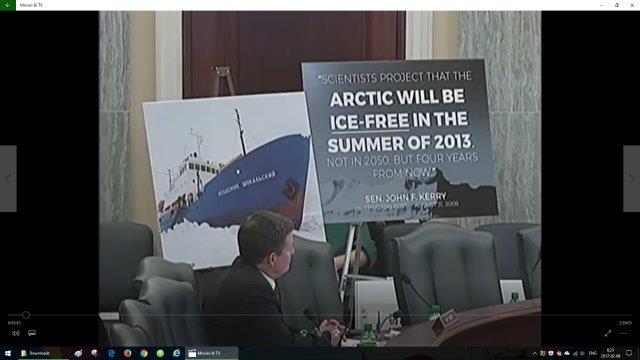
John Kerry’s announcement in 2009 that the artic will be free of ice by 2013 was criticized and called out as “dead wrong” by Senator Cruz. [Senate-Hearing-Senator-Cruz-Chair-Climate-Science-Hearing-160 min Video]
If the advice guiding a world superpower’s leader gets it very wrong, then we have problems. Cruz condemns this and says politicians should speak and act on facts and make decisions based on sound science, and shows the Global Warming science is not settled and that new facts are revealing there is no problem after all.
Is it possible we have another hoax, as some claim, or are the deniers simply being paid off by the Merchants of Doubt and the misinformation Think Tanks? This reminds me of The Piltdown Hoad [The Piltdown Hoax-48 min BBC documentary YouTube], a paleoanthropological hoax in 1912 in which bone fragments were presented as the fossilized remains of an unknown early human, claiming the discovery of the missing link.
It was a big deal and lots of prominent people had emotionally invested in this being true. Sound familiar? It remained the subject of controversy until it was exposed as a forgery 45 years later, and the Geological Society had consensus which dismissed anyone who challenged the claim. Many of the same attributes of this sound like the whole Global Warming debate we now face.
As one commentator said, “Most people have no clue about the science or Earth’s processes, but have very, very strong feelings about it.” How about you? Have you developed strong feelings because of the media or well-crafted movies that don’t explain the science but prey on your emotions? To quote Judith Curry: “It’s a wicked mess.” It’s messy and sadly starting to feel like the ancient battles of Galileo, Darwin, and Piltdown, driven by the elite’s need to control and invoke doom to turn deep feelings into beliefs.
I hope this article will be helpful for the average person who has neither been trained as a scientist nor has a thorough understanding of the scientific method, computer modeling, or the climate change issue itself. Many scientists have spoken out regarding this issue and our leaders are struggling to make policy decisions. I am not sure what value this article would be to politicians, but it can be extremely valuable for individuals to make wise life decisions and deal with controversial topics like this. Gifted speakers showing some graphs telling us what to believe is a problem, and we as people need to be able to sort through, evaluate the information ourselves, and come to some conclusion or, as I promote, draw a baseline to move forward from.
Global Warming alarmists say the world is going to shit and that it is all caused by C02 from us and our way of life (especially if you’re a North American and drive big SUV’s and eat big, thick beef steaks). They have called people that don’t agree “deniers”, which appears to mean they have a different opinion. Well if you’re up-to-date on the subject, then you’re probably confused, and if you’re not, you probably haven’t explored both sides of the debate or just don’t give a shit.
The premise that humans are the driving force of Global Warming and impacting our world in a negative way really started when world leaders set up the Kyoto Protocol, [Kyoto Protocol-Wikipedia] an international treaty which extends the 1992 United Nations Framework Convention on Climate Change.
A few years later, Al Gore came out with his Inconvenient Truth film in 2006. [An Inconvenient Truth 2006-96 min YouTube Video] Other films include Six Degree’s that Could Change the World [Six Degree’s that Could Change the World-96 min YouTube Video] and the beautiful movie Home [Home 2009-120 min YouTube Video], both showing off our planet and the media doing what they do best: Sell news with controversial headlines and the promotion of propaganda. According to the ‘alarmists’, we humans are driving our planet to catastrophic results, heading toward what some say is the ‘sixth extinction’, which is us, the human race.
Soon after, The Great Global Warming Swindle [The Great Global Warming Swindle-96 min YouTube Video], Not Evil, Just Wrong [Not Evil Just Wrong-90 min YouTube Video], and some other videos started combating the issue. Are we doomed to disaster or do we need to better discern the facts and get more accountability and transparency to find out the reality before acting?
“Okay,” I thought, “Stop panicking and reason some more.” Ask yourself, “Did I just jump on a bandwagon and ignorantly align with what people have said on TV? Be wise and step back a little to gain some perspective and sort through this a little more and apply discernment.”
After a more exhaustive study of both camps and applying some discernment, I found an incredible amount of science and scientists providing an alternate view all the way to full blown conspiracies. Then the Climate-Gate leak [Climate-Gate – Wikipedia] emails revealing the actual conversations of scientists and their uncertainty of the data, their discussions about how and why the IPCC is manipulating the data to come up with this so-called “97% consensus”.
Well, in this study I found there are many climate scientists [31487 Scientists say NO to Alarm-16 min YouTube Video] and many are testifying to their governments that we need to rethink this issue. “The Earth is not at the center of the universe” and they better make decisions that are going to affect us all based on science, not some geopolitical agenda. An Intelligence Squared debate in 2007 [IQ2US Debate Global Warming Is Not A Crisis-99 min YouTube Video] shows, when exposed to alternative opinions, the public, too, starts changing their mind. Then, a poll in 2014 revealing international responses and a poll of just what people are concerned about demonstrates changing perceptions.
It is confusing when you have a broad spectrum of facts to look at, but for me, this presents an opportunity to learn. Don’t feel bad if you’re confused on this subject because even the experts and politicians are confused, and they are about to make policy decisions that could dramatically affect the world and economies, especially that of poorer nations which seem will be most affected.
It’s a big issue and we individuals have to come to some conclusions in our minds to have a certain level of peace, avoid personal conflicts, and make good decisions for our family and life. We want to have integrity and make decisions we can be proud of that create more meaning in our lives, so it is equally important for individuals to sort this out.
I offer a baseline approach. Not a conclusion, but an intellectually honest baseline that empowers our life decisions, a line we can draw to grow from.
Analogy: Black & White Dog Fighting
If you listen to either opposing view enough, you will begin to believe it. Let me use an analogy to illustrate this point. This is the story of this wise old man who lived out in the country.
Once a week, the old man would come into town with his two dogs. Both dogs were of equal size and of the same breed; the only difference was that one was white and the other black. He would challenge people to bet on which dog would win in a fight. He did this on a regular basis and to everyone’s surprise, a different dog would win and the owner would always guess correctly.
One day, a young boy asked him, “How do you know which dog is going to win?” The old man replied, “It’s simple: For a week before the fight, I feed only the one dog I want to win.”
The moral of this story is, whatever you feed your mind the most will dominate your belief. If you are developing a belief system about a particular subject, philosophy, or idea, and feed your mind one-sided information, then that view will dominate your belief and increase your bias. You will tend to dismiss any information that doesn’t fit your belief and seek information that confirms your biases. That only strengthens your ‘confirmation bias’ [Confirmation Bias – Wikipedia] and doesn’t serve to solve problems.
I am promoting a healthier perspective and a unique process for dealing with this subject. Please understand I am able to draw a baseline on this subject because I have put in hundreds of hours studying this subject and have been developing and refining this Information Discerning System to draw Baselines, so I am better able to gather and discern the information, recognizing my biases throughout. The principles of process can be applied to other subjects or big life decisions.
Summary of the Baseline Application:
- Baseline Step 1: Your personal experience related to the issue. (Connect the issue to your experience and context of life. Be aware this will be your bias.)
- Baseline Step 2: Context. Gather information on both or all sides of the story, history, and current status. (Be willing to discount your bias to gain a broader, healthier perspective.)
- Baseline Step 3: Review the science and empirical evidence from credible sources, and be aware there is a lot of junk on the Internet. (Look at claims tied to actual scientific studies, fact check, and check sources.)
- Baseline Step 4: Evaluate the information and draw a baseline based on your current understanding. (Understand that this is a place to grow and move forward from, hopefully with a more open mind and respect for the many perspectives.)
- Compile your Resources & References: Keep track of your data, your story, and how you came to this baseline.
- Be open to change and grow as more data, science, and understanding emerges.
This baseline ends with a [Full-list-of-Resources] for this article, but of course, my file folder has dozens of other related reports, videos, and information that was reviewed and used to draw this baseline.
- List of all the videos (about 50 hours of video)
- Gallery with images [Global-Warming-Image-Gallery]
- Supporting documents and reports
Baseline Step 1:
Our personal experience and observations: Here is my relationship to C02 and the Canadian climate.
From my 50 years’ experience of life, Global Warming made sense, but alarmism certainly didn’t. I was born in 1962 and raised in Calgary, Canada, and remember long, cold winters with lots of snow through the 70s and 80s, starting as early as September and not leaving until Spring, except when the odd chinook blew in and melted snow. I remember having to shovel snow from our driveway and sidewalks, experiencing 1, 2, and 3 feet of snow. Even the odd winter when cold and heavy snow would close the schools.
By the time I left Calgary in the 90s, we had much less snow and I don’t remember schools every closing. I could ride my motorcycle some days as early as February and experienced the odd ‘brown Christmas’, so my experience was definitely a change of climate and a warming of the Northern Hemisphere.
There was nothing sudden and the weather was always different with two or three big snow dumps, some minus 30 days, plus cold and warm snaps called ‘chinooks’ every year. Without being told what to believe, I would say that Canada was warming and had less snow, and that the climate always changes. Nothing dramatic in my life, but the odd freak storm like the Great Ice Storm [Great Ice Storm of 1998 – Wikipedia] that hit eastern Canada in 1998. Since then, things were quite normal with nothing much to report. I have been in China 13 years now and it too has been very stable with no discernable change year by year. Interestingly, my Chinese wife also says that when she was growing up, she had much more snow; so she, too, has experienced similar climate change.
I was briefly familiar with the Kyoto Protocol from the basic news sources, but didn’t really understand it or connect the problem to me as an individual, and so didn’t think any more about it. After watching An Inconvenient Truth [An Inconvenient Truth 2006-96 min YouTube Video] in 2008, I got caught up by Gore’s story as it seemed the world was heading for disaster, and I was just about to start a family.
I am not a scientist nor a skilled researcher, but felt I should better understand and did some due diligence, searched for some understanding unable to discern the results from the IPCC, and discovered a Canadian public policy think tank called the Fraser Institute [Fraser Institute – Wikipedia] who produced a report [Fraser Institute Independent Summary of IPCC Summary for Policymakers 2007-PDF 516 KB] that summarized the IPCC Assessment Summary from 2007 [IPCC 2007 Assessment Summary for Policymakers], making it more understandable to a layperson. I dismissed the problem once again as it described the cycle of the climate which matched my experience described above.
Supporting western companies to have goods manufactured in China, I had several opportunities to be involved in “green” products, and got involved in some solar technology and LED lighting, but ended up in air filtration. With a new baby, of course I put a lot of attention on my immediate environment, my home, and office where I spend 95% of my time in the short winter and 75% of my time in the 6-month summers.
Being involved in air filtration, “air quality” became my focus and I started studying and applying various techniques to improve my home and office. The only real air quality measurements I had were the AQI websites [Air Quality Index – Wikipedia], but I had no idea whether I could trust the numbers or not and, truthfully speaking, had no idea what the numbers meant.
I decided to get more serious and purchased a few air meters to measure some key gases and started monitoring and learning. I spend dozens of hours viewing indoor and outdoor air quality and built a portable test kit so I could measure 02, 03, C02, temperature, and humidity in various environments and conditions.
I was immediately surprised to learn what C02 actually measures in my home, office, and the various other locations I tested. In my home, C02 measurements before going to sleep are about 700ppm, and when we wake up are about 900ppm – So a fair bit of build up over the night from our breathing. When I get to the office every morning, it measures about 600ppm +/- 50ppm. During my exercise routine, C02 rises to 900-1100ppm. For every person that comes to the office, the C02 rises about 100ppm or so. Here are some measurements from my office in the morning during the month of June, 2016.
I became even more surprised that when I breathe into a zip-lock bag and put my meter in it, it measures 5010ppm. I tested several of my friends and, of course, we humans breathe out 5000ppm of C02. I tested my new car and, to my surprise, tests the same as our human breath!
Well, that is a little confusing as I don’t hear anyone talking about the 7 billion of us breathing out the same as our cars? I did find some research that says we take in and use equal amount of CO2, so it cancels out; but that, too, doesn’t make sense as I know I am only breathing in 600-700ppm and breathing out 5000ppm, so I guess more study is required on that point.
What I do get from these tests is that C02 varies greatly, which has led me to better understand the relationship between C02, my immediate environment, and this whole issue of C02 causing Global Warming.
Apparently, the composition of our atmosphere is 78% Nitrogen, 21% Oxygen, 0.9 % Argon, and 0.1% a bunch of trace gases in which C02 is included.
Of these 0.1% trace gases, C02 makes up only 0.038% of our atmosphere, which is reported as our current atmospheric level of C02, or 380ppm as most commonly reported. Graphs like this appear in big name media articles and on websites and, now, I understand even this to be wrong as it doesn’t include water vapor, which constitutes a much larger percent and is a bigger driver of Global Warming as “the scientists” claim, but I will bet you don’t hear much of that.
Even with an inaccurate graph that doesn’t take into account water vapor, what the alarmists are talking about is such a small percentage of the air it is hard to believe it can make any difference at all. Another fact is the health benefits to humanity from increased C02. To get plants to grow, healthy greenhouses install C02 burners to increase C02 to 1200ppm, otherwise, they say, you will just not be productive. With even a little research, it is clear that increasing C02 is beneficial for plants and animals, and helps make our planet greener and fuels one of the big carbon sinks, the plants, trees, and grasslands.

Okay, it is clear that climate changes. Of course, it always has and it should also be clear that C02 is not a pollutant, but a beneficial gas and we carbon-based life forms wouldn’t be able to live without it. C02 itself varies a lot as you can see, so it seems the big problem is whether an increase of it 5-10 kilometers up in the troposphere is the “force or driver” warming the planet?
We seem to be debating whether this small amount, the small increase, is the cause they claim that may drive humans to extinction. To summarize the “small” effect, let Illinois Representative Shimkus’s explanation to a Health Agency that doesn’t have a clue of the numbers [Rep. Shimkus questions impacts of man-made CO2-7 min Video]. This is another example of agencies that impact policy makers but don’t seem to have a clue on this subject.
That convers my personal experience, so now let’s look at some of the dozens of hours and testimonies of experts.
Baseline Step 2:
The current context (getting up-to-date on both sides)
Simply getting up-to-date on any subject can be a real challenge as you really can’t just put “Global Warming” or “climate change” into a search engine and expect to get good information. The Internet is full of inaccurate information and ignorant opinions, so we really need a way to discern valid from non-valid opinions.
I have reviewed over 40 presentations, adding here what I thought were reputable, some controversial, and even one or two pointing to conspiracy to push our biases. If your’re not open to reviewing the other side of the debate, then you really need to check if you’re fulfilling your confirmation bias or insecurities in support of a particular belief system.
The Deniers:
Judith Curry, a climate scientist and professor, provided an excellent professional overview of the current state of the climate debate and is very proactive to drive dialogue with both the scientific and public towards a better understanding. [Judith Curry – Climate Science and the Uncertainty Monster-57 min YouTube Video] Judith Curry also testified at a Senate hearing [Senate Hearing-Senator Cruz Chair Climate Science Hearing-180 min Video] starting with her statement: “Prior to 2009, I thought that supporting the consensus on climate change was the responsible thing to do. I bought into the argument: Don’t trust what one scientist says, trust what an international team of 1,000 scientists have said after years of careful deliberation. That all changed for me in 2009 following the leaked Climate-Gate emails that illustrated the sausage-making and even the bullying that went into making the consensus.”
I highly recommend her perspective as she is not oil-funded and is a credible climate scientist who promotes transparency and accountability through her blogs and dedication to the subject.
Matthew White Ridley is a British journalist and businessman best known for his writings on science and the environment. [Matt Ridley Global Warming vs Global Greening-40 min YouTube Video] At the UK Royal Society, Ridley demonstrates how the planet is greening and discusses other benefits from increased C02 in the atmosphere.
Dr. John Christy, an Alabama State Climatologist, talks to a group of students telling them the data he presents has been submitted in court at Senate hearings and shows the science isn’t settled, and how this debate has gone from a science issue into a moral and political issue. [John Christy on The Economics and Politics of Climate Change-66 min YouTube Video] (This video contains a nice Q&A session at the end, and it’s always nice to hear questions from younger generations.)
Patrick Moore, an environmentalist, has a powerful story as he is an Ecological Scientist and Environmentalist Activist who cofounded Green Peace, leading the stop of nuclear bomb testing in the 60s. An incredible man with a hell of a story, he brings his knowledge and experience together to deny the alarmist claims. Here is one of many talks you can find of Dr. Moore. [Patrick Moore Human CO2 Emissions are Wholly Beneficial-42 min YouTube Video]
Dr. Roy Spenser is a research scientist with the University of Alabama: I particularly like this guy because he is a Christian New Earth Creationist, and at the 24:10 min. mark [Senate Hearing-Climate-Change-is-it-Happening-Scientist-Testimony-48 min Video] was asked a valid question: If he believes in Creation over Evolution, whether there is more science to support a 6,000 year-old creationist view over biological evolution.
He responded that there is not enough evidence to support biological evolution. A valid question because as far as I am concerned, if you believe the Earth is only 6,000 years-old and that god made it look real old, then it is hard to believe his science on Global Warming. The other side is that if he is a true believer, then we should be able to rely on his testimony being honest.
Anthony Watts is a broadcast meteorologist most famous for his blog [What’s Up With That-Wikipedia] relating to climate. He challenged NOAA to consider the sites of our ground-based thermometers as so many of them are located in heavy urban areas, airports, car parking lots, and next to buildings which dramatically affect measurements. [Climate Fraud – NOAA’s Global Temperature Dataset-Anthony Watts-15 min YouTube Video]
Dr. Richard Lindzen was a contributor and lead author on the 3rd Assessment report, comments on the IPCC saying: “It is a funny sort of operation that is a little bit tilted,” and continues to explain his perspective. [Interview with Professor Richard Lindzen-48 min YouTube Video].
Tim Ball takes this topic into a logical conspiracy theory. Consider Ball’s experience in life and his scientific expertise while he makes a good case for the hoax. He has a valid point and drives for more transparency and accountability in the organizations that produce data and how policies are formed. [Tim Ball – Human Caused Global Warming – The Biggest Scam In History-48 min YouTube Video]
Mark Steyn is a passionate and articulate journalist being sued by Michael Mann for calling his “hockey stick” graph a fraud, an abuse to the scientific method, and an issue of free speech. [Mark Steyn – The Fraudulent Hockey Stick – 10th ICCC-48 min YouTube Video]
- Richard Keen [Climatologist Dr Richard Keen – Show Me The Data-70 min YouTube]
- [The Challenge of Climate Change Prof Brian Hoskins (May 2016)-90 min YouTube Video]
- Easterbrook: [Dr Easterbrook Global Warming HOAX _ Facts-85 min YouTube]
- Jon Lloyd: [Professor Jon Lloyd (Life Sciences) – Going brown or getting greener-46 min YouTube Video]
- Professor Denis Rancourt: [Professor Denis Rancourt Simply Climate Change-120 min YouTube Video]
- Nobel Laureate Physicist Ivar Giaever: Global Warming is the New Religion [Nobel Laureate in Physics-Global Warming is Pseudoscience-32 min YouTube] the way in which people are engaged in this subject.
- [Evidence-Based Forecasting for Global Warming. J. Scott Armstrong, Ph.D-60 min YouTube Video]
US & Canada Senate hearings leading to policy:
I personally am quite ignorant about the political processes and what actually goes on in our courts and hearings that influence our policy makers. I had some experience leading a non-profit organization in which I learned you cannot please everyone and have to strive to make the best decisions you can based on the organization’s vision and mission.
Since then, I have always felt for our leaders when they are making decisions and understand the great challenge they have with the variety of opinions and feelings of the public. This subject is a great challenge as politicians have to rely on the convoluted information they can gather, try their best to sort through the facts, and come to some sort of conclusion.
It really seems like a joke when organizations like The Sierra Club [Sierra Club-Wikipedia], an environmental organization in the United States and one of the first large-scale environmental preservation organizations in the world, currently engage in lobbying politicians to promote green policies. The current chair, Aaron Mair, doesn’t even seem to know the basics facts of this issue. It is really sad to watch Cruz [Senate-Hearing-Cruz-Questions-Sierra-Club-President-Aaron-Mair-Climate-Change-10 min Video] ask basic questions to which the leader of this organization that is influencing policy can’t even answer basic questions.
Senator Cruz ends the senate hearing [Senate-Hearing-Senator-Cruz-Chair-Climate-Science-Hearing-160 min Video] with 8 of what he calls facts (actually, he names only 7):
- Carbon Dioxide is, rather than being a pollutant, good for plant life. (greening our planet)
- The Earth, right now today, is greening.
- That for significant periods in history, there has been markedly more C02 in our atmosphere and that was prior to the industrial revolution, so it could not have come from the burning of fossil fuels.
- For the last 18 years, the satellite and weather balloon data both demonstrate no significant warming whatsoever. That fact in particular, not a single democratic senator had a response to.
- That the satellite and weather balloon data is the best data we have on whether warming is occurring and that evidence, the actual data, demonstrates that it is not.
- That the seas were rising more in the first half of the 20th century prior to the significant increase in carbon dioxide emissions than they are now.
- That the computer models that are telling us we need to raise every hard-working American’s electric bills, gas bills, and cost of living, and that we need to make it harder for single moms, for immigrants, for African-Americans, Hispanics, and for every hard-working men and women to make ends meet. The computer models are profoundly wrong, not a little bit wrong, but profoundly wrong.
Two full US Senate hearings can be viewed here:
- [Senate Hearing-Climate-Change-is-it-Happening-Scientist-Testimony-48 min Video]
- [Senate-Hearing-Chafee-Climate-Alarmist-brings-little-evidence-then-absolutism-20 min Video]
Being Canadian, watching our leaders deal with this debate was equally revealing of the challenge in policy-making, and now I have much more appreciation of why Canada forges ahead with pipelines and the big oil projects like the Athabasca Oil Sands [Athabasca Oil Sands-Wikipedia]. I have a clear bias in favor of Canada and would be pleased if carbon-driven Global Warming would be bullshit because we (Canada) are a large knowledge-based country with lots of oil.
Ross McKitrick, Professor of Economics at the University of Guelph specializing in Environmental Economics, has published on the economics of climate change, statistical analysis, and was an expert reviewer on the IPCC’s 4th Assessment Report, and so is fully qualified to provide his testimony and advice to the Canadian government. In the hearing [Senate-Hearing-Canada-Climate-Science-Economics-Hearing-2011-12-15-120 min Video], McKitrick also describes the reviewing process and the biases of the organization and the pressures for reviewers to “tow the party line”, all explained in the first 7 minutes of his testimony. The hearing continues with multiple climate scientists who provide their testimony on the science of the issue.
McKitrick claims that of the 195 member countries that make up the IPCC, the vast majority don’t read the papers nor submit comments; and of the comments received, over half came from two countries, the USA and Australia. Most of the member countries send bureaucrats, not scientists, as delegates.
At the 1 hour 15 min mark, Senator Tommy Banks says he likes to apply the “precautionary principle”, considering to prepare to act without having proof, then presents 4 extreme scenarios that could result:
- We do nothing and nothing happens. (A win.)
- We do nothing and the worst happens. (Big lose, leaving an inhabitable world for our children.)
- We do everything and nothing happens. (A big lose.)
- We do everything and as a result we save the world. (That’s a big win.)
The senator sets up a context by asking that, for our grandchildren, which of these would you choose? Where would you place your bet?
McKitrick replied that he had made a proposal and describes creating a small carbon tax tied to the value of atmospheric temperature measurements, leaving it to the future results and people deciding which is the most credible story, with the Government not having to commit to either story. Basically, having made a good decision regardless of the outcome to which banks reply: “Being right, now, matters and the outcome is very attractive to politicians.” This hearing has been very enlightening and I highly recommend that you watch it along with the US senate hearings.
You have to understand the actions and practices described by PhD author Naomi Oreskes. The 2010 book, Merchants of Doubt [Merchants of Doubt – Wikipedia], followed by the 2014 movie of the same name [Merchants of Doubt-90 min YouTube Video], traces the use of public relations tactics that were originally developed by the tobacco industry to protect their business from research indicating health risks from smoking.
Oreskes describes how Global Warming deniers are applying the same strategies outlined in the book. In a more recent interview, Oreskes [Science for the Public – Creating Public Doubt about Science – Interview with Naomi Oreskes-60 min YouTube Video] talks about when people challenge scientific issues, they found a pattern in not only the form of questioning but also the same people and organizations behind it. These organizations are well-known and often cited in the debates on this subject, and are heavily used in movies like the 2016 movie, Before the Flood, which Leonardo DiCaprio narrated [Before the Flood-95 min YouTube Video], and to which I have some comments on below.
It is a powerful book and reveals the level of sophistication of the Think Tanks and Front Groups with their professional-looking websites, credible scientists that produce excellent-looking reports with all the graphs, and sources to impress and create that doubt.
I was impressed, too, when I read the Fraser Institute Independent Summary of IPCC Summary [Fraser Institute Independent Summary of IPCC Summary for Policymakers 2007-PDF 516 KB], who is listed as one of these organizations. These groups, Oreskes explains, are not just to confuse the public on issues, but also for internal corporate misinformation so that sales people don’t know the facts, leading them to doubt their own companies. Top executives often withhold and, in some cases, manipulate information to prevent internal dissent. On this point I personally feel corporate executives and government policy-makers should be held criminally liable if caught changing, distorting, or manipulating information and lying to the public.
Awakened by The Merchants of Doubt, you realize you may be being tricked by the well-crafted websites and responses of the deniers – they are all funded by think tanks and big oil and you can’t believe any of it. Well, of course this is a valid perspective and needs to be taken seriously, but after going through the “denier” views, you are likely to start believing that Global Warming is completely misunderstood, that you have been misled by the media (duh) and the underlying agendas from the IPCC and other governmental agencies. The movies are all hype and emotional, and you might even be a little pissed by now.
At this point, I would like to remind you of the Black and White Dog analogy spoke of above and the strategy Oreskes points out of inducing doubt and creating confusion if you have shifted positions. It is a normal human response and function of our brain, so let’s be aware of these processes and move on with the article.
The Alarmists:
To be honest and show my bias, I will not represent this side of the debate with the fullness one could because I couldn’t easily find scientists presenting lectures. It seems to be settled on their end and now the world is subjected to movies and films that play to emotions and feelings rather than present facts and figures.
Even with awareness of the Merchants of Doubt, it sure seems as if it is not the deniers but the alarmists that have fallen prey to towing the party line, or have watched too many of the movies and are connected by emotions, not facts. I am going to share my perspective from re-watching some of the following programs and you will notice that not one scientific paper is cited, and it should be clear that these films are well-crafted to stir your emotions instead of appealing to your intellect.
Intergovernmental Panel on Climate Change: The IPCC
The IPCC is surely got to be the way to go, bringing the globe together to deal with a global problem, right? Or is this the forming of another bureaucratic organization driving a hidden agenda? For the most part, I have to think the organization’s goals and mission are good for mankind. I personally have little confidence in politics and politicians and support this organization, but expect transparency with the facts and accountability on their actions. The explanation of the organization’s goals is very encouraging and seems to be what the world needs to solve global problems like this.
In an interview at the 2015 IPCC COP19 conference [IPCC-COP19 Nick Dunlop Secretary-General Climate Parliament-11 min YouTube Video], the secretary general, Nick Dunlop, was asked what the objective of the organization is: “So, you have members of parliament ,who are most of your organization, whose mission is to promote renewable energy?” He answered: “That’s right. We are working with members of parliament of quite a number of countries around the world.”
It’s basically a well-funded and well-politicized organization driving renewable energies, and you need to keep in mind that the world has enabled the IPCC to take the lead and focus on the 10% part of our energy production believing it is our best solution.
Just like the Global Warming films, even the IPCC starts their Science Basis video [IPCC-Climate Change 2013 The Physical Science Basis-10 min YouTube Video] with images of disaster and neither cites nor reference one scientific paper.
Only the comments quote “the science is stronger than ever”, which I guess we people have to just accept or go and read their reports and see if we can figure out the facts. It is simply an organization with a goal and mission, so we can be certain they select and promote the papers that support their view point, which is clearly an absolute. All the reports can be found on their website [http://www.ipcc.ch].
Paris 2015:
In February, 2016 at the Grantham Institute, a panel discussion was held to discuss the outcomes of what happened in Paris in 2015-Cop21. [What did COP21 in Paris really deliver, and what do we need to do about it now-73 min YouTube Video]
It really is awesome what has been accomplished and what is being committed to by bringing representatives from almost every country in the world. Sir David King, Chief Scientific Advisor to the UK Government, summarized the commitments in the below slide.
That is $100 Billion per/year contributed from developed nations to developing nations to reduce emissions and adaptation. He continues to say this “new low carbon sector” is a 2-3 trillion dollar per/year business, making it the largest sector in world history. Trillions of dollars are being invested with commitments from 195 countries is really is an historical point in history and we can only hope there will be a much higher level of accountability and transparency as this bus has already left the terminal and doesn’t look like anything is going to stop it.
More encouraging, from my perspective, is when King said Bill Gates came in and said he would put a billion dollars on the table –not from his foundation, but a personal contribution – then turned up in Paris with 26 other billionaire friends each promising to contribute something similar.
On a side note, it is inspiring to see the action of Gates, his foundation work, and his public announcement that he will donate 95% of his wealth to worth-while causes and encourage others to follow. [Bill and Melinda Gates why giving away our wealth has been the most satisfying thing we have ever done-25 min YouTube Video]
Alarmist Scientists:
Actually, I found very few real alarmist scientists, most are much more conservative in their claims, and it should be clear there is certainly no consensus as I list a dozen scientists above and a denier organization [International Conference on Climate Change-Wikipedia] created a petition claimed to be signed by over 31,487, scientists so you must throw out the idea of ‘consensus’. [Global Warming-31487 Scientists say NO to Alarm-16 min YouTube Video] The so called “consensus” was also created by the IPCC, who is obviously a fully renewable-biased organization.
Michael E. Mann, the author of the “Hockey Stick” graph, was famously used by Al Gore and is now in court with Mark Steyn. Mann is suing Steyn for publicly announcing his graph is fraudulent and that Mann’s science is an abuse of the scientific method. It gets worse as there are implications in the Climate-Gate emails that he manipulated the data to create the graph.
I hope the truth comes out and he is punished to the full extent if he lied or is vindicated and continues with his career. Watching Mann’s 2016 presentation in Iceland [Dire Predictions Understanding Climate Change– the Earth101 lecture-Michael E. Mann-35 min YouTube Video] was quite lame. In fact, he never citied any scientific paper; the only paper he cited was the newspaper.
Al Gore and the film the Inconvenient Truth is also equally lame scientifically, as not one scientific paper was citied. However, the film was extremely well-crafted, bringing in his sick child, the family’s abandoned farm, and many other emotional images to sway the public, which led him to sharing the Nobel Peace Prize with the IPCC in 2007.
I would like to think that Gore is sincere and deserving of the Peace Prize, but it is really troubling to hear in the House Energy Subcommittee hearing from the 8:27 to 10:48 min mark [Al Gore’s Inconvenient SCAM, Lies versus Lord Monckton Truth and Logic-100 min YouTube Video], which confirms Gore’s partnership in the investment in Kleiner Perkins venture capital firm, which invested a billion dollars in 40 companies that are going to benefit from cap & trade legislation.
You have to ask whether he produced the film before becoming a partner in Kleiner Perkins or after, as no human can help but be fully biased when you have huge investment involved.
Then, in an interview with professor Richard Lindzen [Interview with Professor Richard Lindzen-48 min YouTube Video] from the 13:07 to 16:00 min mark, Lindzen commented on his experience with Al Gore in the early days dealing with people that challenged his motives, that he was just not being that nice like he is portrayed in his film. Furthermore, Alex Jones, who has strong opinions and sees the conspiracies in everyone, tears him apart in this short talk: [Al Gore-Climate Change Lies Exposed-Alex Jones-20 min YouTube Video].
Of course, people are human, with all our weaknesses, and we all have had our days, even seasons, when we are not acting with complete integrity. We all have our biases, but eventually come to our senses so one can only hope that Gore is sincere and corrects any mistakes he has made as he moves his agenda forward. Even if there ends up being no need for alarm, he surely helped raise awareness of the environment, our planet, and individual people’s responsibilities, to which credit is due.
Leonardo DiCaprio narrated the 2016 film Before the Flood [Before the Flood-Wikipedia] which, like most alarmist movies, start with images of disaster. This film is Hollywood at its best, emotionally grabbing you by starting with DiCaprio talking about a painting “The Garden of Earthly Delights” he claims was above his crib when he was a baby, then describes the story from the Garden of Eden to sinfulness to Armageddon. This is just what the church has used to control people throughout the ages: That mankind is born bad, evil, and destroys the world. What a powerful way to set up your mind. At the 6 minute mark, a Fox News commentator says: “Who better to educate world leaders on ‘made up climate change and a crisis that doesn’t exist’ than an actor from Hollywood.”
Statements like, “Once you invest in wind and solar, you have free energy forever” is bullshit, as the manufacturing of wind towers – which I have experience with here in China – is the most expensive power to build, requiring huge resources to manufacture towers, then expensive generators let alone the land and costs to maintain them. Nothing lasts forever, especially steel on mountain tops.
He looked quite humbled in front of these developing world people, especially the famous Indian activist Sunita Narain, who pointed out the electrical consumption of the average American compared to others around the world and tried to say that she hopes the West’s “investment in Solar and Wind will solve the problem”, as she shakes her head listening to this guy. I only wish she would have shown him the amount of resources, the size of the carbon foot print of the rich people like himself, and that growing gap of inequality.
DiCaprio touring Elon Musk’s Tesla Gigafactory [Gigafactory 1-Wikipedia] was inspiring, with claims to have done the calculations to transition the “whole world to sustainable energy.” Like DiCaprio said: “Is that all? Seems so doable.” Nice speech at the end and looks like DiCaprio is the new messenger of peace for our salvation, the Pope seems to be with him and imagine he is in line for the next Nobel Peace Prize. If he is as passionate as he claims, I wonder if he is forming a foundation or donating his wealth like the Gates’ and Buffet’s.
I watched this PBS Documentary hoping to get some science, as they claim in the title [The Signs and Science of Global Warming-55 min YouTube Video], but it, too, is utterly lame: Not one study cited and what seems like the strategic use of some no science pretty women with the video cut half way above her breasts. Basically, just a film about ground-level pollution complaints correlating to what is going on 100 kilometers above. So, enough with the movies and documentaries, as next to the media it really is a lame source to get informed and help make decisions in life. Good for entertainment, but needs serious discernment as not to load you with unreal biases.
Brian Cox is a brilliant physicist and science promoter with the BBC who I highly respected for his work with the BBC on Wonders of the Universe [Wonders of the Universe], followed later with Wonders of the Solar System [Wonders of the Solar System] in which he shares his physics expertise, helping us further our understanding of space.
I liked how he communicated the unknown and the need for science to continue its process to deepen our understanding, but when it comes to Global Warming, he seemed to lose all scientific objectivity. It is not even within his area of expertise, and recently said on a Q&A panel discussion [Q&A – 2-Professor Brian Cox explains climate science to denier Australian Senator Malcolm Roberts-13 min YouTube Video] when asked about the science, says, “The absolute, absolute consensus is that human action is leading to an increase in average temperatures, an absolute consensus that can’t be argued with.” Then holds up a graph like it is the ultimate proof; and his second graph is Al Gore’s 500,000 year carbon correlation and arrogantly says he can give Malcolm a lesson if he wants, like someone that doesn’t even appreciate the complexity or the scientific process.
I have lost all respect for him now and will be very skeptical of any science he speaks of in future documentaries. It seems as being involved in media productions and becoming somewhat famous has understandably affected him.
David Suzuki, Canada’s most famous science presenter, is winding down his career and touring the world with his powerful Legacy Speech. [David Suzuki An elder’s vision for our sustainable future-83 min YouTube Video]
Undeniably he makes some key points relating to perspectives I feel strongly about and apply to my life on a regular basis, but I do have a problem with these rich, gray haired folks going around the world telling us we are at the 11th hour, 59th minute without providing any solutions. His credibility kind of all goes out the door when we learn he has partnerships with an oil company, multiple homes, tons of money, and charges outrages fees, so Canadian Ezra Levant claims. [Ezra Levant-Sun News confronts and reveals David Suzuki-54 min YouTube Video]
A local friend of mine watched his legacy speech and was taken in wanting to join his foundation when returning to Canada, but got turned off after signing up online and found little opportunity to act and received constant solicitation to buy products. He watched Ezra Levant and immediately asked to be taken off the list, seeking a more transparent organization to join.
Professor Richard Alley of Penn State University is an expert on ice, specifically ice cores. His team drilled a two-mile-long ice core in Greenland containing 100,000 years of climate. On the 2006 Naked Science program [Naked Science – Big Freeze-50 min YouTube Video], Alley claims climate was usually nice and smooth, going up and down with sometimes a big change for one year.
The climate swings wildly between two extremes making it unpredictable, but anticipates a “big freeze.” Professor Lonnie Thompson of Ohio State University, also an ice core expert, correlates temperature drops with volcanic eruptions from Alley’s Greenland cores.
The documentary says scientists claim that “Global Warming” could mess with our climate, melting the ice sheets which could desalinate the oceans, stopping the conveyor thus sending England and northern Europe into a freeze.
Since a lot of the air composition evidence comes from ice cores, it is certainly well worth getting more facts from this science which Alley presents at the 6th Annual J. H. Carlson Lecture in 2016, titled “Big Ice: Antarctica, Greenland & Boston.” [Big Ice Prof Richard Alley (October 2016)-77 min YouTube Video]
Baseline Step 3:
The evidence (scientific and empirical)
When talking about “the science” and empirical evidence [empirical evidence-Wikipedia], one must understand the current state of science. It appears as science itself is going through a crisis. This is a baseline on its own, but needs to be brought up here. Jerome Ravetz [Jerome Ravetz – The Post-Normal Science of Bads-10 min YouTube Video] and Andrea Saltelli [Andrea Saltelli – Science on the Verge-11 min YouTube Video] demonstrate the unintentional, fundamental problem in managing huge volumes of data and publications produced.
Scientists with desperation to “publish or perish” to get or keep funding end up with a high percentage of their results not being repeatable. This new science is the science of science, as Jerome Ravetz calls it “The science of advice.” A more detailed explanation of the state of science and the challenge to reproduce results of most of the scientific papers, improve science quality, and raise the standards in science as a whole is clearly presented by John Loannidis. [John Ioannidis Reproducible Research True or False _ Talks at Google-56 min YouTube Video].
With the above in mind, what do you and I really know about the scientific method? Are you a science experiment designer or an expert statistician capable of dealing with the raw data that creates the models?
On this subject, how well do you understand natural variability, feedback loops, oceanic oscillations, space weather, the Milankovitch Cycles, and the solar effects? Milankovitch Cycles appear to be critical to understand and here is an excellent explanation: [Climate Change 2017, The Milankovitch Cycles-20 min YouTube Video].
I selected graphs from only 2 presentations. Most are self-explanatory, but best to hear direct from the scientists that presented them. These graphs were also presented in North American senate hearings under oath, which surely must add more to their credibility.
- [Judith Curry – Climate Science and the Uncertainty Monster-57 min YouTube Video]
- [John Christy on The Economics and Politics of Climate Change-66 min YouTube Video]
Definite rise in C02, which is not debated:
Models not portraying reality:
Floods and Droughts constant cycles:
Heat waves in USA rare:
Arctic ice sheet thinning, Antarctic growing:
No apparent big change in hurricanes:
Temperature models don’t match observations 1:
Temperature models don’t match observations 2:
Temperature models don’t match observations 3:
El nino, La nina constant cycles:
What is agreed to and what isn’t:
There is plenty of room for climate, ocean, and air scientists, geologists, physicists, and so on to discuss the science, debate their models, and collaborate on a healthy cross-discipline dialogue dealing with the self-correction that science is supposed to have built in, but for some reason, this is not happening in this debate.
It is interesting that most of science can have a healthy debate, but some like the Earth-Centered Universe in Galileo’s time, Darwin’s Evolution, and now Global Warming seem to reflect the strong beliefs of people based on ignorance, insecurities, and some of the typical human traits that seem to be holding back the development of a beautiful world.
This invokes climate psychology and I feel it is important to bring this subject into the discussion. Per Espen Stoknes is an environmental psychologist and one of many who explore the psychology specifically related to Global Warming.
In one lecture [Climate psychology Why our brains ignore climate change and what to do about it-65 min YouTube Video], he brings up many points, like why some people draw an apocalyptic scenario and no matter what is said or revealed, they will stay with their conclusion like that of religious belief. Some take an extreme position, as illustrated in this car bumper sticker:
This further illustrates the impact of issues like this, whether consciously or unconsciously, and its effect on us and our lives. The images from well-crafted movies and the constant bullshit work of the media take things out of context to create a headline imprint in our minds creating confusion.
If you feed your mind enough of one-sided information, it can have a real negative impact of your life. Raising fear for the future which can lead to bad decisions, invoking guilt when filling up your SUV at the pumps, or judging wealthy people for having a big house and fine luxuries of life. All the more reason to gain a healthy balance and draw a baseline instead of an emotional conclusion based on media productions.
Baseline Step 4:
Drawing a baseline
I do have to say that after turning off the TV some 25 years ago, quit watching the news and going to better sources to get informed, that getting broader opinions with deeper context has turned me more into an optimist than a pessimist.
With this subject, it is easy to tell who formed their opinion from newspapers and movies rather than a broader and deeper understanding of the science from the scientists running the scientific instruments that actually produce the data. A good example was my move from Canada to China some 15 years ago, almost everything I had acquired about China through the common channels was flat out wrong or misleading. I quickly learned what concepts people hold in their minds in the West are more often than not false or a poor representation of reality. I sense the same thing with this subject.
With even a little study on the Earth’s climate, our oceans, air and land cycles, the complex interactions in our biosphere with all carbon-based life, our Earth’s rotation and tilt, space weather and solar cycles, we can see it’s obviously a very complex system. Of course the science isn’t settled, we are just starting to understand this complex system and our relationship with it. There seems to be many correlations between humans and our planet, but any decent scientist knows correlation does not mean cause.
It’s clear to me that we do have problems and we need to figure out not only what impact humans have on the planet, but where the planet is naturally going, what are the drivers of temperature, and what we need to changes and adaptations to embrace.
We are currently planning the terraforming of Mars [Terraforming of Mars-Wikipedia] to create an atmosphere to make that planet habitable. It is what we are doing with the sustainability movement [Sustainability-Wikipedia], the generation of green energy led by the IPCC, the 10s of thousands of people, scientists, entrepreneurs, and organizations that are building new technologies that care for us humans and our planet. Curry asks some key questions on this subject:
- What temperature do we want? (In Canada and Russia, we would like it a little warmer, but I’m quite sure the populations that pack the equator wouldn’t.)
- What is the right amount of C02 and combination of other gases?
- Can we control our climate? (Or is the planet going to self-regulate itself as in the Gaia Hypothesis [Gaia Hypothesis-Wikipedia]?)
Baseline 1:
Invest in and follow the scientific Programs
It appears that we are once again completely dependent on science and technology to solve our problems. It is clear the corruption, greed, and agendas in our political systems and organizations are embarrassing, so we need to drive more accountability and transparency to improve our decision-making process. We need to invest in the science, develop hypothesis, and test them openly and honestly. We need to build scientific instruments that help us better understand the complex systems and complex variables within them.
Thankfully, we have been smart enough to invest in the science and the scientific instruments, as well as with the experiments to better understand our planet. Below is a short list of humans at our best, globally collaborating on solutions for a better world.
Copernicus Programme is the world’s single largest Earth observation program and directed by the European Commission in partnership with the ESA [European Space Agency-Wikipedia]. It aims at achieving a global, continuous, autonomous, high quality, and wide-ranging Earth observation capacity. Providing accurate, timely, and easily-accessible information to, among other things, improve the management of the environment, understand and mitigate the effects of climate change, and ensure civil security. It follows and greatly expands on the work of the previous 2.3 billion euros European Envisat program which operated from 2002 to 2012. [Copernicus Programme-Wikipedia]
Critical Zone Observatories (CZO) is an interdisciplinary collaborative research project across nine institutions with the purpose of understanding the chemical, physical, geological, and biological processes that both shape the surface of Earth and support terrestrial life.
Active CZO sites include locations in Boulder Creek, Calhoun, Eel River, Intensively Managed Landscapes (IML), Jemez River Basin & Santa Catalina Mountains, Luquillo, Reynolds Creek, Susquehanna Shale Hills, and Southern Sierra.
Funded by the National Science Foundation, CZO has been working since its 2007 inception to critically engage the scientific community and increase understanding of the importance of critical zone observatories [Critical Zone Observatories-Wikipedia].
The Landscape Evolution Observatory (LEO) is the world’s largest laboratory experiment in the interdisciplinary Earth sciences. The experiment consists of three artificial landscapes contained within elaborate steel structures, and located inside three adjacent bays within the University of Arizona Biosphere 2.
The landscapes are designed as experimental replicates; each has dimensions of 30m length, 11m width, an average slope of 10°, and is filled to a uniform depth of 1 m with crushed basalt rock that was extracted from a volcanic crater in northern Arizona.
In their initial state, the landscapes consist of approximately 500 metric tons (more than 1 million pounds) of the crushed rock, which have a loamy sand texture. This initial condition will allow scientists to observe each step in the landscapes’ evolution—from purely mineral and abiotic substrate to living, breathing landscapes that will ultimately support microbial and vascular plant communities. [http://biosphere2.org/research/projects/landscape-evolution-observatory] [Biosphere 2-Wikipedia]
NASA’s Orbiting Carbon Observatory-2 (OCO-2) satellite explores and records the planets green space fluctuations. Launched in July, 2014, it studies carbon dioxide in the atmosphere and helps us understand how fast it will build up in the future. The mission will provide a more complete, global picture of the human and natural sources of CO2, as well their “carbon sinks,” the places where CO2 is pulled out of the atmosphere and stored, such as plants, land, and the ocean. [Orbiting Carbon Observatory-2-Wikipedia] Learn more about the mission at www.nasa.gov/oco2.
Argo Oceanography is a system for observing temperature, salinity, and currents in the Earth’s oceans, which has been operational since the early 2000s. The real-time data it provides is used in climate and oceanographic research. A special research interest is to quantify the ocean heat content (OHC).
Argo consists of a fleet of almost 4000 drifting profiling floats deployed worldwide. Each Argo float weighs 20–30kg. Profiling floats are commonly used in oceanography and become “Argo floats” only when they are deployed in conformity with the Argo data policy. In most cases, probes drift at a depth of 1000m (the so-called parking depth) and, every 10 days, by changing their buoyancy, dive to a depth of 2000m and then move to the sea-surface, measuring conductivity and temperature profiles as well as pressure. [Argo Oceanography-Wikipedia]
Download this Wiki-Book [Wiki-Book-Scientific-Programs-Earth-Environment-PDF 1 MB] with full details of the above scientific instruments.
If the IPCC is going to lead the world with policy recommendations, holding countries accountable to limits set out, then it, too, should be even more accountable on gathering the facts presented by the world’s best instruments and programs, transparently revealing all the data and allowing all scientists, especially those critical to help in the evaluation process, to get the best possible outcome.
Baseline 2:
Management of our resources
Pollution is obviously a problem for our planet. The more we manufacture, the more we consume, and the more shit we put in our air, water, and land, are all responsible for most of the problems reported in these alarmist Global Warming videos.
I live in Qingdao, in the province of Shandong, China, a province of 95 million people, and for the most part it is not bad. In fact, it is quite good on the coast where I am. I have measured and tracked the air quality for a few years and it is quite clear the problem is the Particulate Matter (PM2.5 & 10) from smoke and dust.
The pollution comes from the millions of old vehicles blowing black smoke from their tail pipes, if they have them, millions of people burning bad coal, wood, and corn husks for cooking, and their constant burning of paper and fireworks for superstitious purposes.
Here is the AQI screenshot of China on the first day of the 2017 Chinese Spring Festival when country-wide fireworks celebrations take place:
It was the same thing the year before and the year before that. Actually, no different than London and the US in the recent past, hosting some of the most polluted cities in the world. In a presentation titled Tale of Three Cities [Tale of Three Cities-13 min YouTube Video], Dr. Bryan N. Duncan, the deputy project scientist for the Aura Mission at NASA’s Goddard Space Flight Center, demonstrates how the US invested and implemented technology to reduce pollution up to 60% in some cases.
This is False Creek area of Vancouver, the top picture from 1978 when this area was still highly industrial, as compared to 2003. After removal of lead from our gasoline, banning harmful industrial practices, and implementing green strategies, we ended up with a relatively healthy clean environment despite an increasing population. The same applies with other cities throughout the developed world.
Just like in North America and England changing from messy, dirty environments into more clean and healthy ones, with engineering and technology we can and are cleaning up this world in a positive way. Green energy is a part of that solution, so we can fully accept IPCC’s intentions but need to ensure more transparency and accountability as described above.
The bottom line is we need more or complete transparency from the gatekeepers of information. There is a new type of human accountability evolving as everyone is becoming more aware of the issues, have access to the data and, even more importantly, become aware that other people are aware, making it easier to stand up against the establishment. This is what Daniel Dennett calls the “New Transparency.”
The total positive I get from this subject is that it has brought the world together, not only in the debates, but more importantly in the scientific programs like those mentioned above that bring people from all different backgrounds, races, and religions together to explore, study, work, and collectively solve problems. I am totally optimistic for the future, confident we will solve our problems, and excited about leading my daughter into this brave new world.
Moving Forward:
For me, I am simply moving forward, being conservative on consumption of products and use of energy, not because I am concerned my energy impacts are significant, but simply for the fact I have moved into a new stage of life and more into quality than quantity.
Drawing this baseline did a few things for me:
- Helped me better understand the complexity of this problem and the difficulty the world has in coming together to solve it, so I need to support it by doing my part.
- Enabled me to see vast opportunities for engineering, technological advancement, development, and change.
- Gave me confidence in humanity and the optimism to raise my daughter as I lead her into the future.
- Instilled more humility and openness to change my views as evidence and experience reveals new understanding. Like good science, having a self-correction mechanism.
- Gave me skills on gathering, discerning, and managing information, especially on difficult issues seeming to be beyond me.
Article References:
Image Gallery: [Click here to access Image Gallery] then click on a thumbnail to see full-size images.
Reports:
- [Global-Temperature-Report-2016.PDF 770 KB]
- [Global-Temperature-Report-2017.PDF 42 KB]
- [IPCC-2007-Synthesis-Report-PDF 4 MB]
- [IPCC-2014-Synthesis-Report-PDF 11.5 MB]
- [IPCC-2007-Assessment-Summary-for-Policymakers-PDF 2 MB]
- [Fraser-Institute-Independent-Summary-IPCC-Summary-for-Policymakers-2007-PDF 516 KB]
- [Judith-Curry-testimony-2013-PDF 1 MB]
- [Wiki-Book-History-Kyoto-to-Paris-PDF 1 MB]
- [Wiki-Book-Scientific-Programs-Earth-Environment-PDF 1 MB]
- [Wiki-Book-World-Environmental-Organizations-Programs-PDF 4.3 MB]
Videos: Available on this website, all others.
- [Senate-Hearing-Senator-Cruz-Chair-Climate-Science-Hearing-160 min Video]
- [ Shimkus questions impacts of man-made CO2-7 min Video]
- [Senate Hearing-Climate-Change-is-it-Happening-Scientist-Testimony-48 min Video]
- [Senate-Hearing-Cruz-Questions-Sierra-Club-President-Aaron-Mair-Climate-Change-10 min Video]
- [Senate-Hearing-Chafee-Climate-Alarmist-brings-little-evidence-then-absolutism-20 min Video]
- [Senate-Hearing-Canada-Climate-Science-Economics-Hearing-2011-12-15-120 min Video]
YouTube Videos: Search on YouTube for the provided title.
- [The Piltdown Hoax-48 min BBC documentary YouTube]
- [An Inconvenient Truth 2006-96 min YouTube Video]
- [Six Degree’s that could Change the World-96 min YouTube Video]
- [Home 2009-120 min YouTube Video]
- [The Great Global Warming Swindle-96 min YouTube Video]
- [Not Evil Just Wrong-90 min YouTube Video]
- [31487 Scientists say NO to Alarm-16 min YouTube Video]
- [IQ2US Debate Global Warming Is Not A Crisis-99 min YouTube Video]
- [Judith Curry – Climate Science and the Uncertainty Monster-57 min YouTube Video]
- [Matt Ridley Global Warming vs Global Greening-40 min YouTube Video]
- [John Christy on The Economics and Politics of Climate Change-66 min YouTube Video]
- [Patrick Moore Human CO2 Emissions are Wholly Beneficial-42 min YouTube Video]
- [Climate Fraud – NOAA’s Global Temperature Dataset-Anthony Watts-15 min YouTube Video]
- [Interview with Professor Richard Lindzen-48 min YouTube Video]
- [Tim Ball – Human Caused Global Warming – The Biggest Scam In History-48 min YouTube Video]
- [Mark Steyn – The Fraudulent Hockey Stick – 10th ICCC-48 min YouTube Video]
- [Climatologist Dr Richard Keen – Show Me The Data-70 min YouTube]
- [The Challenge of Climate Change Prof Brian Hoskins (May 2016)-90 min YouTube Video]
- [Dr Easterbrook Global Warming HOAX _ Facts-85 min YouTube]
- [Professor Jon Lloyd (Life Sciences) – Going brown or getting greener-46 min YouTube Video]
- [Professor Denis Rancourt Simply Climate Change-120 min YouTube Video]
- [Nobel Laureate in Physics-Global Warming is Pseudoscience-32 min YouTube]
- [Evidence-Based Forecasting for Global Warming. J. Scott Armstrong, Ph.D-60 min YouTube Video]
- [Merchants of Doubt-90 min YouTube Video]
- [Science for the Public – Creating Public Doubt about Science – Interview with Naomi Oreskes-60 min YouTube Video]
- [Before the Flood-95 min YouTube Video]
- [IPCC-COP19 Nick Dunlop Secretary-General Climate Parliament-11 min YouTube Video]
- [IPCC-Climate Change 2013 The Physical Science Basis-10 min YouTube Video]
- [What did COP21 in Paris really deliver, and what do we need to do about it now-73 min YouTube Video]
- [Bill and Melinda Gates why giving away our wealth has been the most satisfying thing we have ever done-25 min YouTube Video]
- [Dire Predictions Understanding Climate Change– the Earth101 lecture-Michael E. Mann-35 min YouTube Video]
- [Al Gore’s Inconvenient SCAM, Lies versus Lord Monckton Truth and Logic-100 min YouTube Video]
- [Al Gore-Climate Change Lies Exposed-Alex Jones-20 min YouTube Video]
- [The Signs and Science of Global Warming-55 min YouTube Video]
- [Q&A – 2-Professor Brian Cox explains climate science to denier Australian Senator Malcolm Roberts-13 min YouTube Video]
- [David Suzuki An elder’s vision for our sustainable future-83 min YouTube Video]
- [Ezra Levant-Sun News confronts and reveals David Suzuki-54 min YouTube Video]
- [Naked Science – Big Freeze-50 min YouTube Video]
- [Big Ice Prof Richard Alley (October 2016)-77 min YouTube Video]
- [Jerome Ravetz – The Post-Normal Science of Bads-10 min YouTube Video]
- [Andrea Saltelli – Science on the Verge-11 min YouTube Video]
- [John Ioannidis Reproducible Research True or False _ Talks at Google-56 min YouTube Video]
- [Climate Change 2017, The Milankovitch Cycles-20 min YouTube Video]
- [Climate psychology Why our brains ignore climate change and what to do about it-65 min YouTube Video]
- [Tale of Three Cities-13 min YouTube Video]


